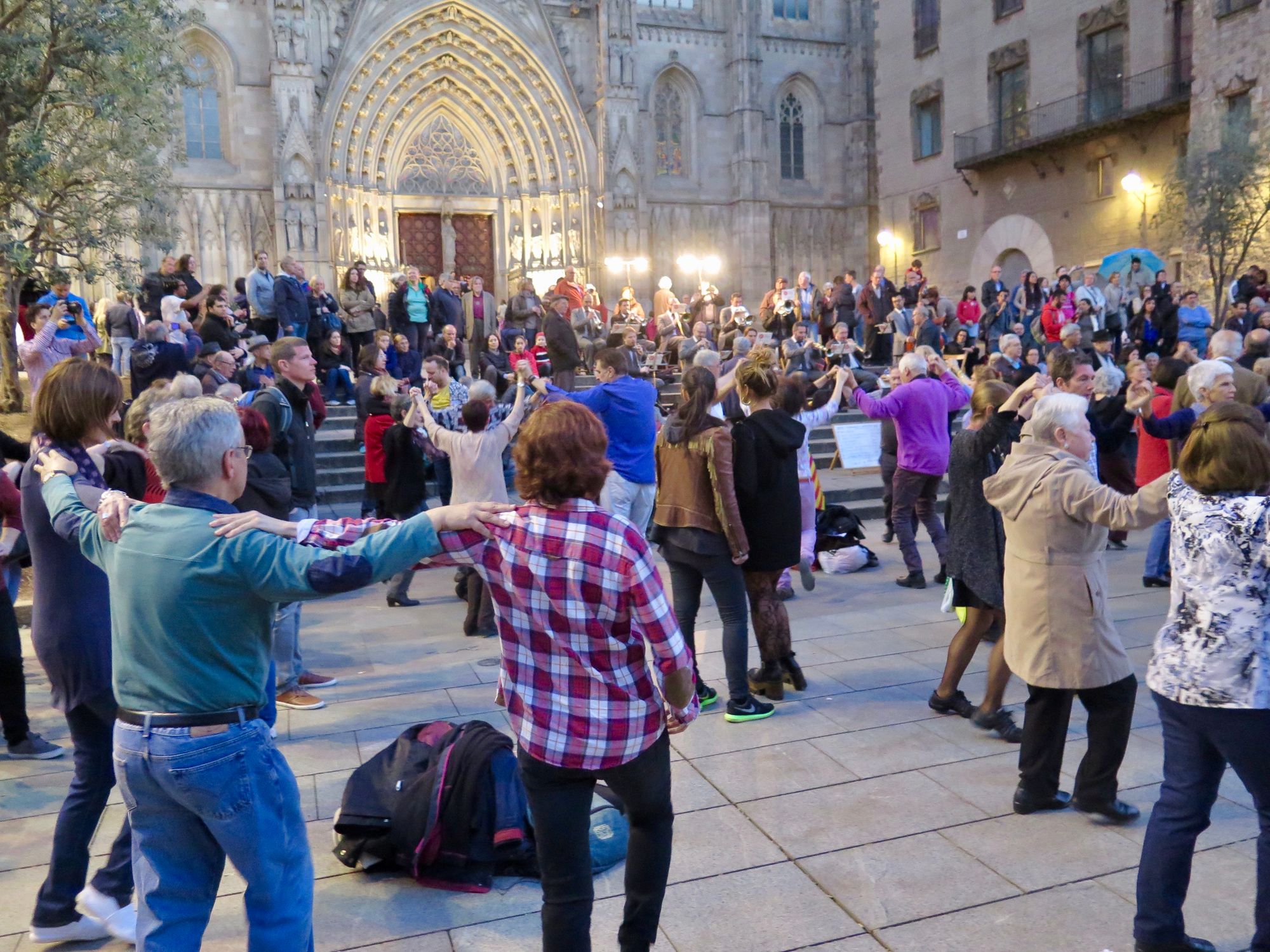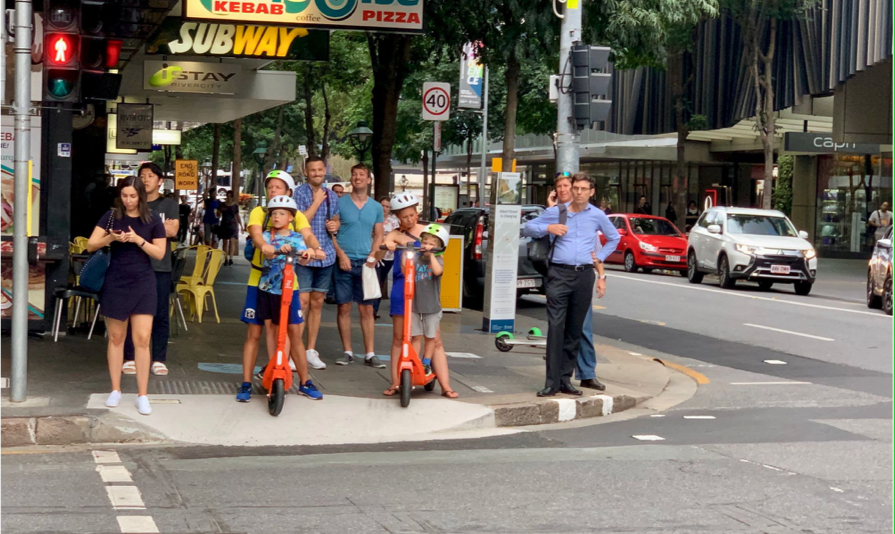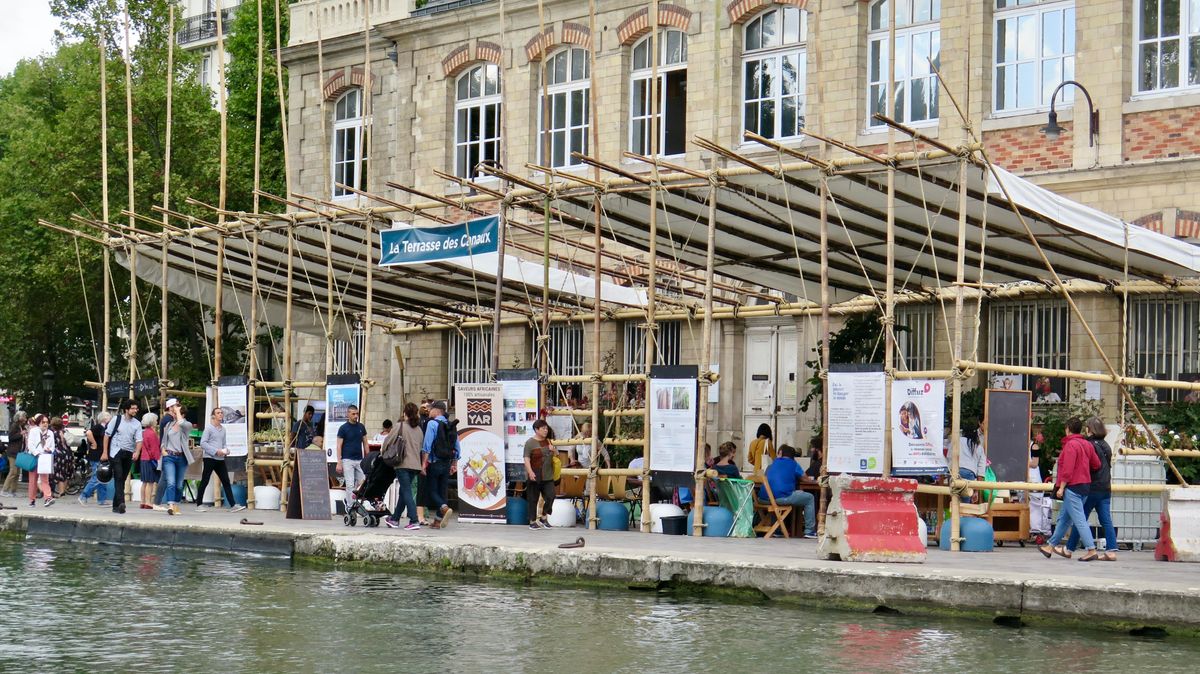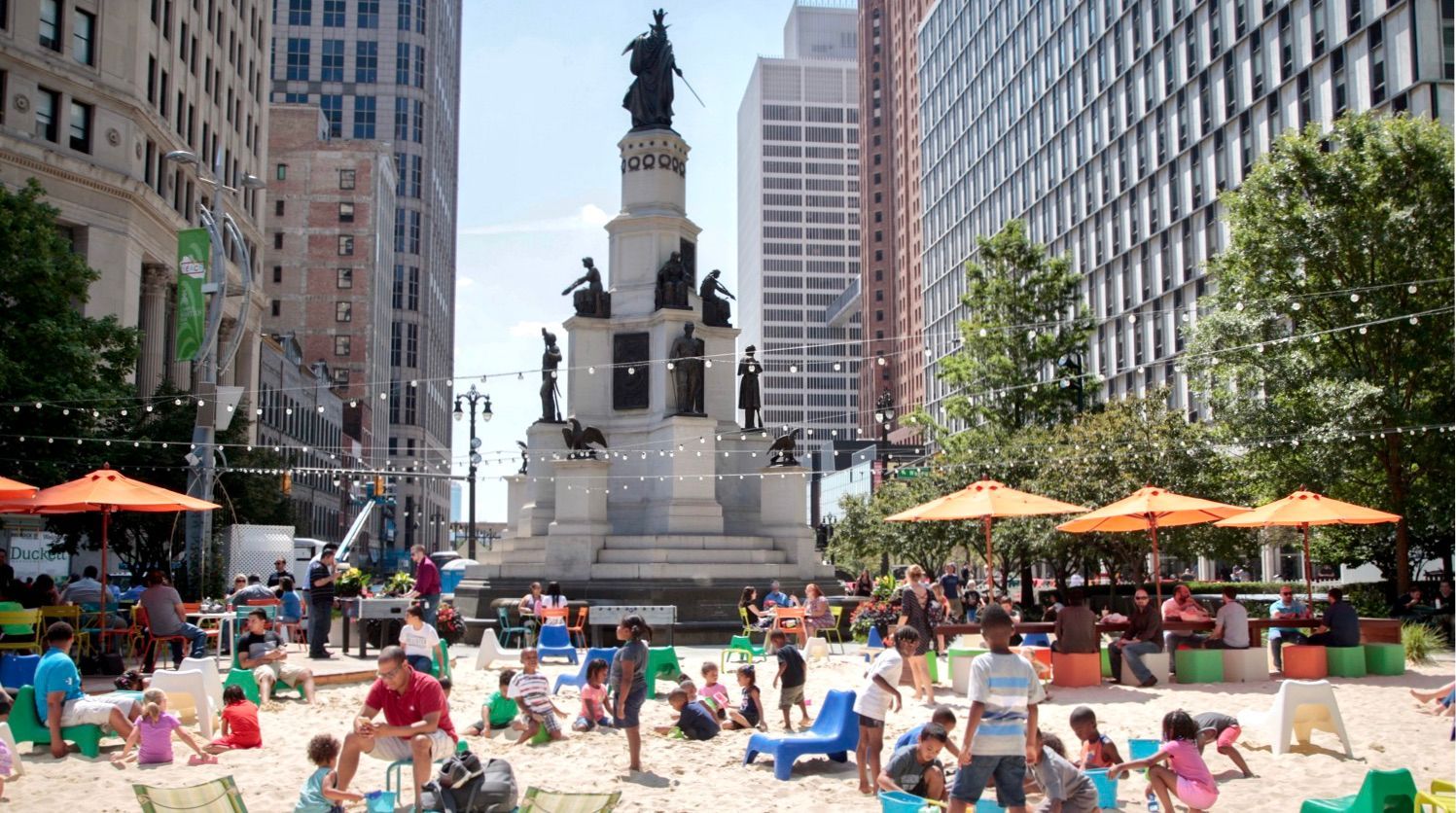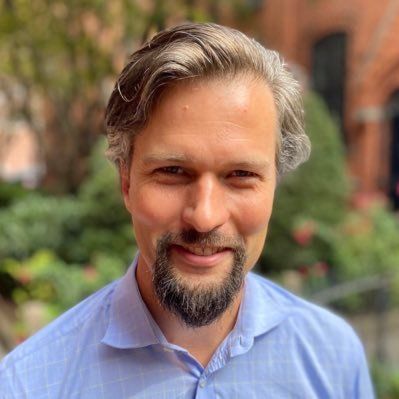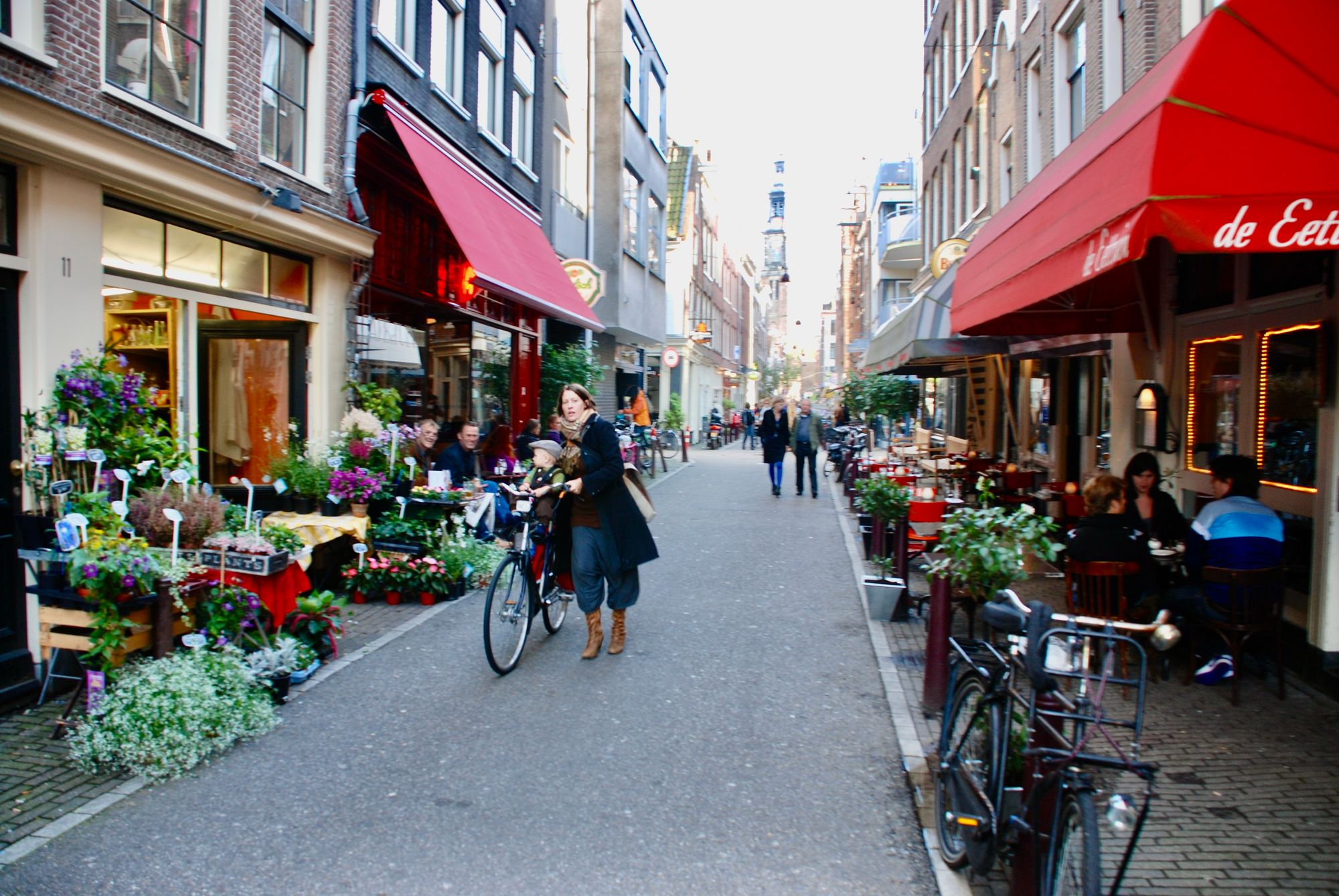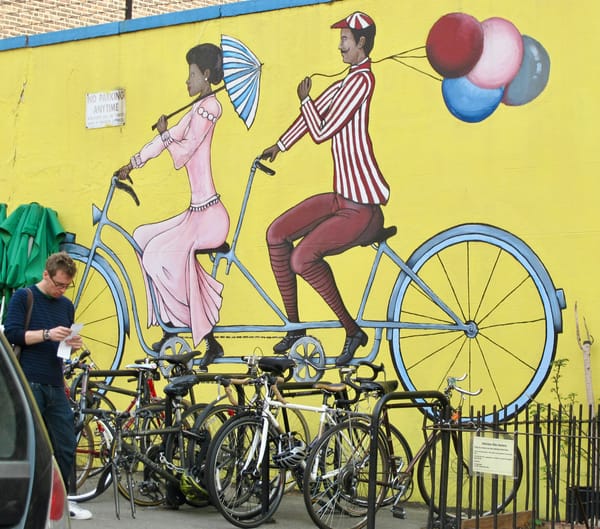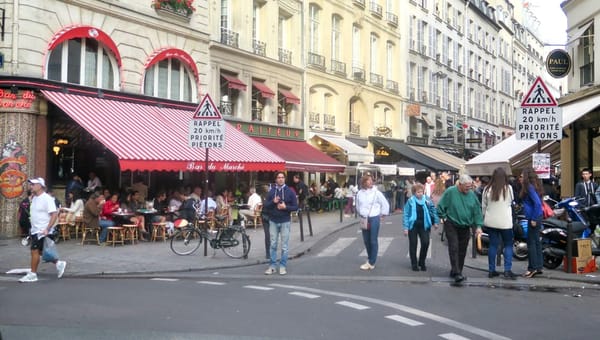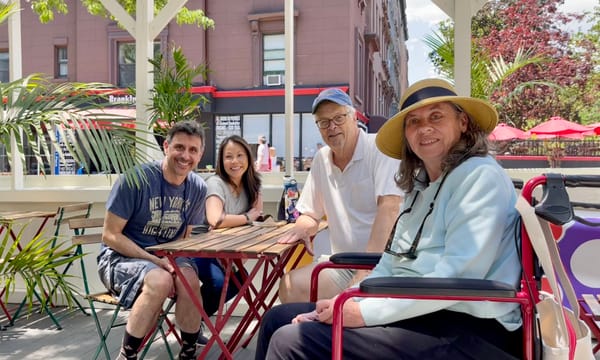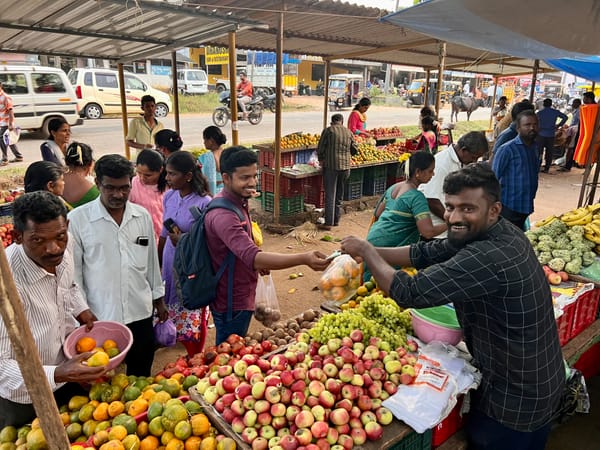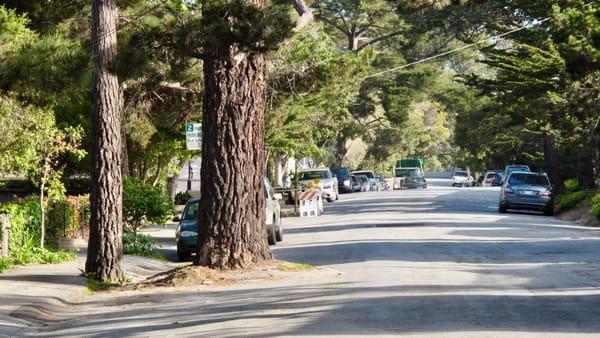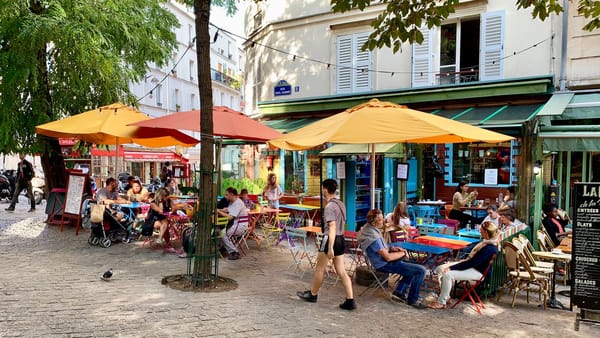The patterns of activity that occur in one place on this street display the social life outcomes for which streets can be planned.
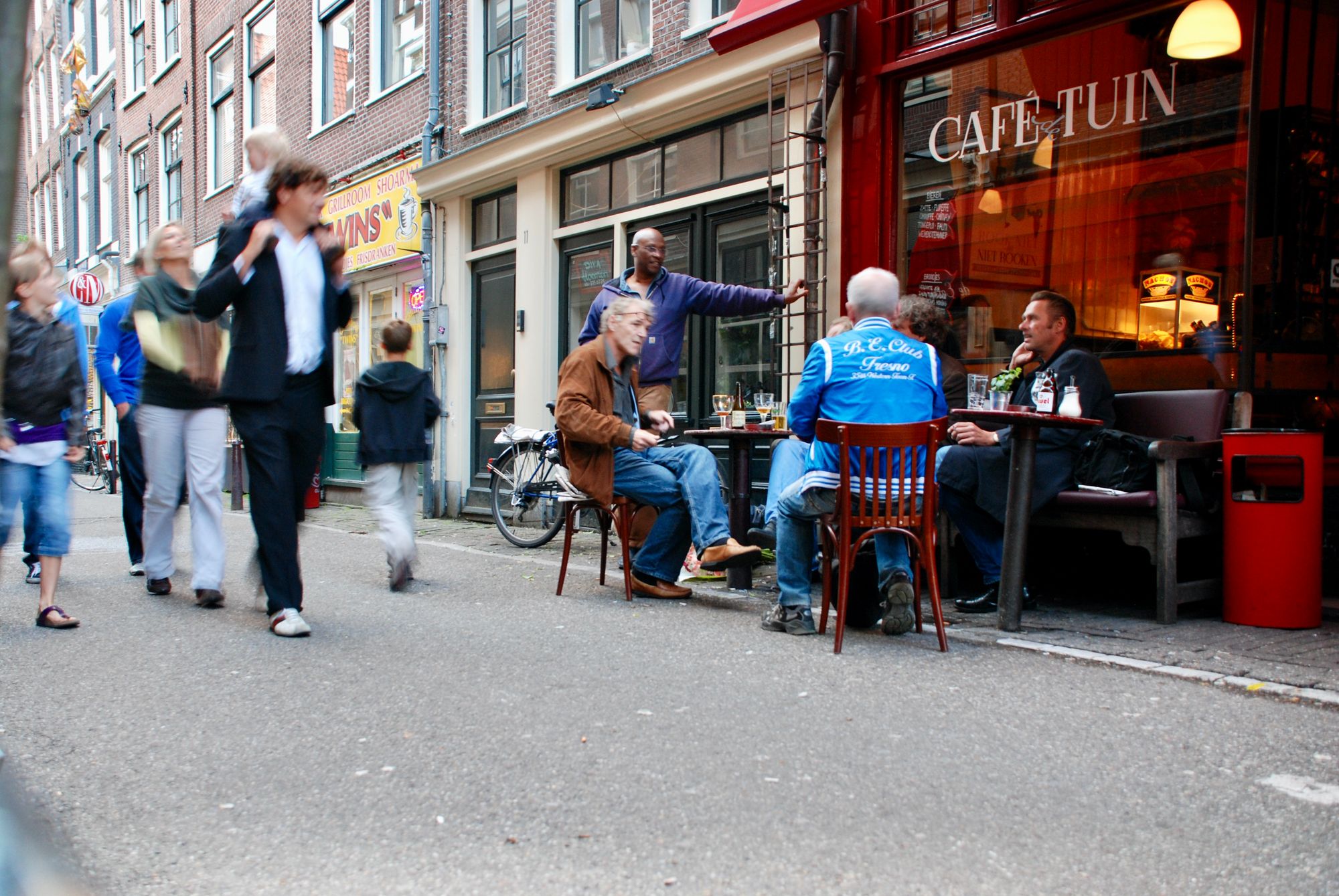
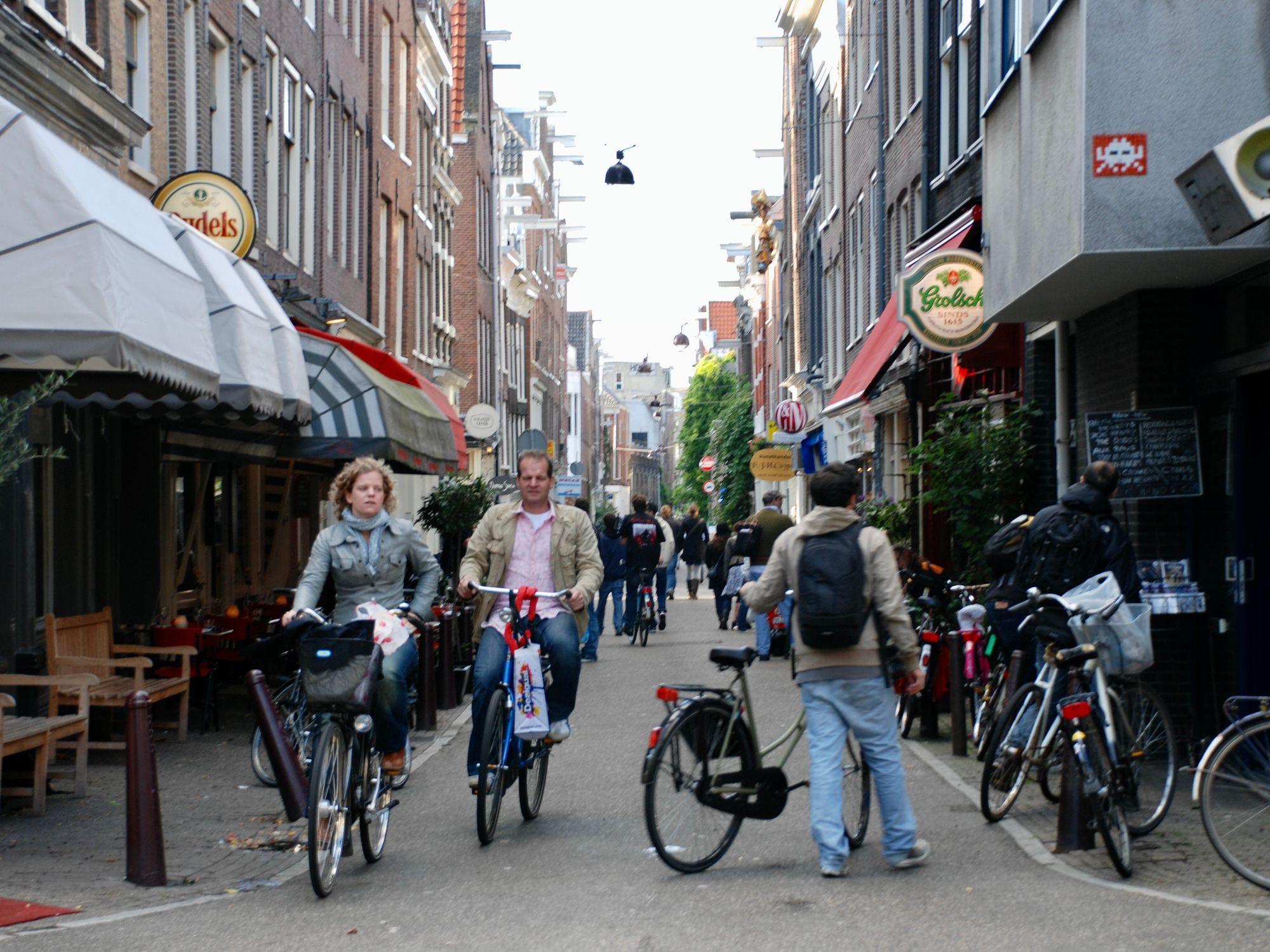
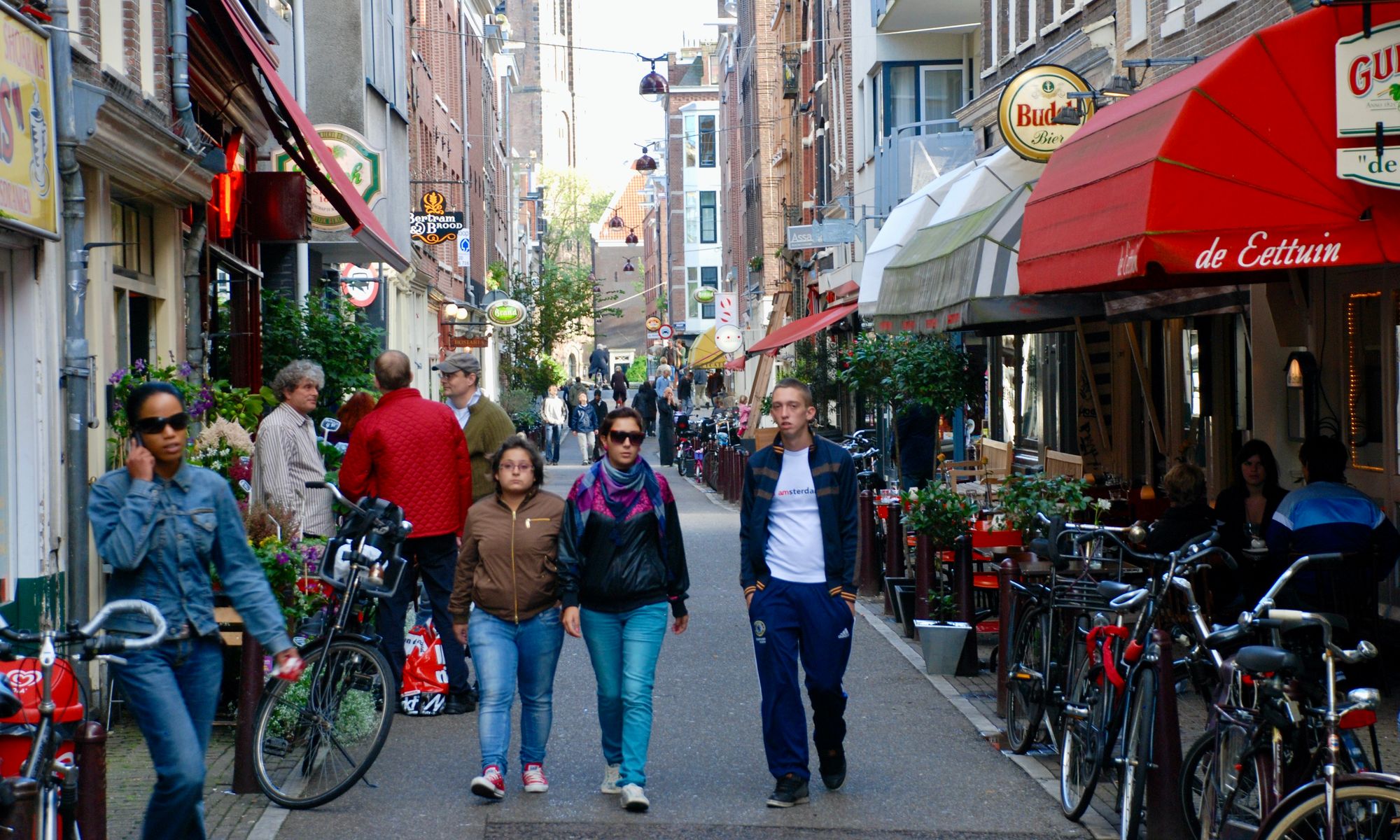
Tweede Tuindwarsstraat, in the Jordaan District of Amsterdam, is a street that supports social life, drawing people to slow down and connect.
When wandering through a network of streets, we are naturally drawn to its center. On each street, we seek out the slowest point, often at an intersection – and if we continue to follow this pattern, we gravitate toward progressively slower and more engaging streets and spaces.
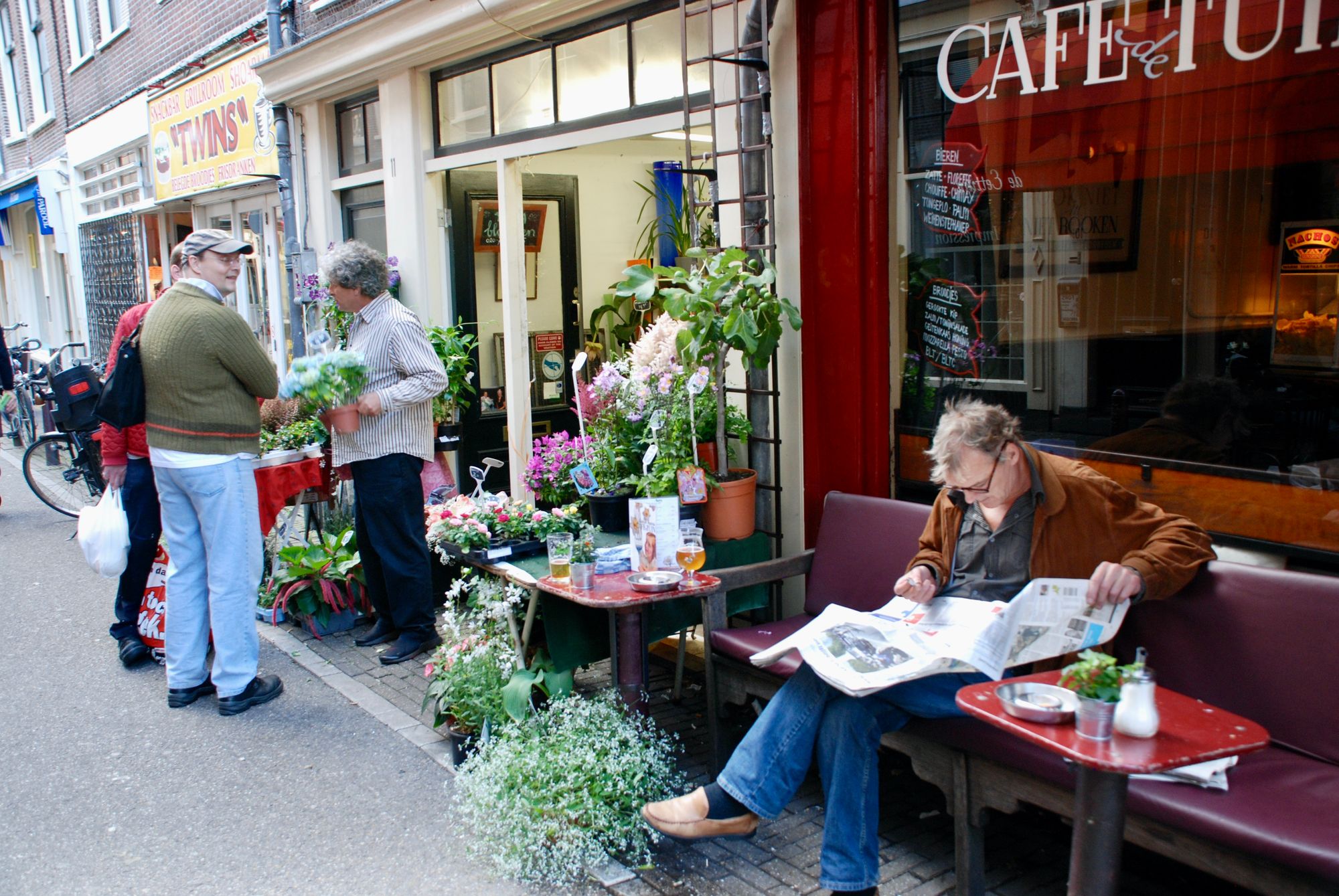
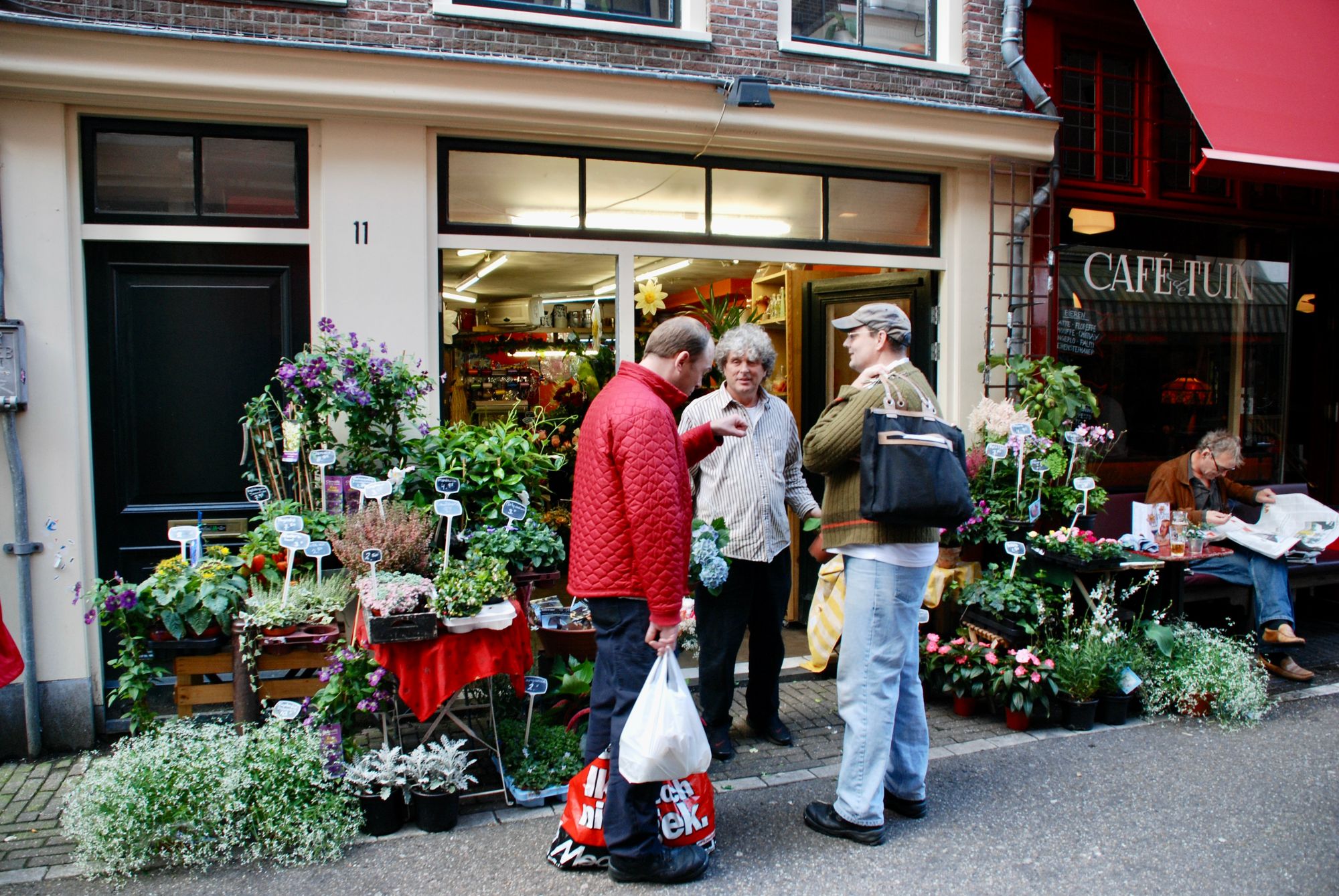
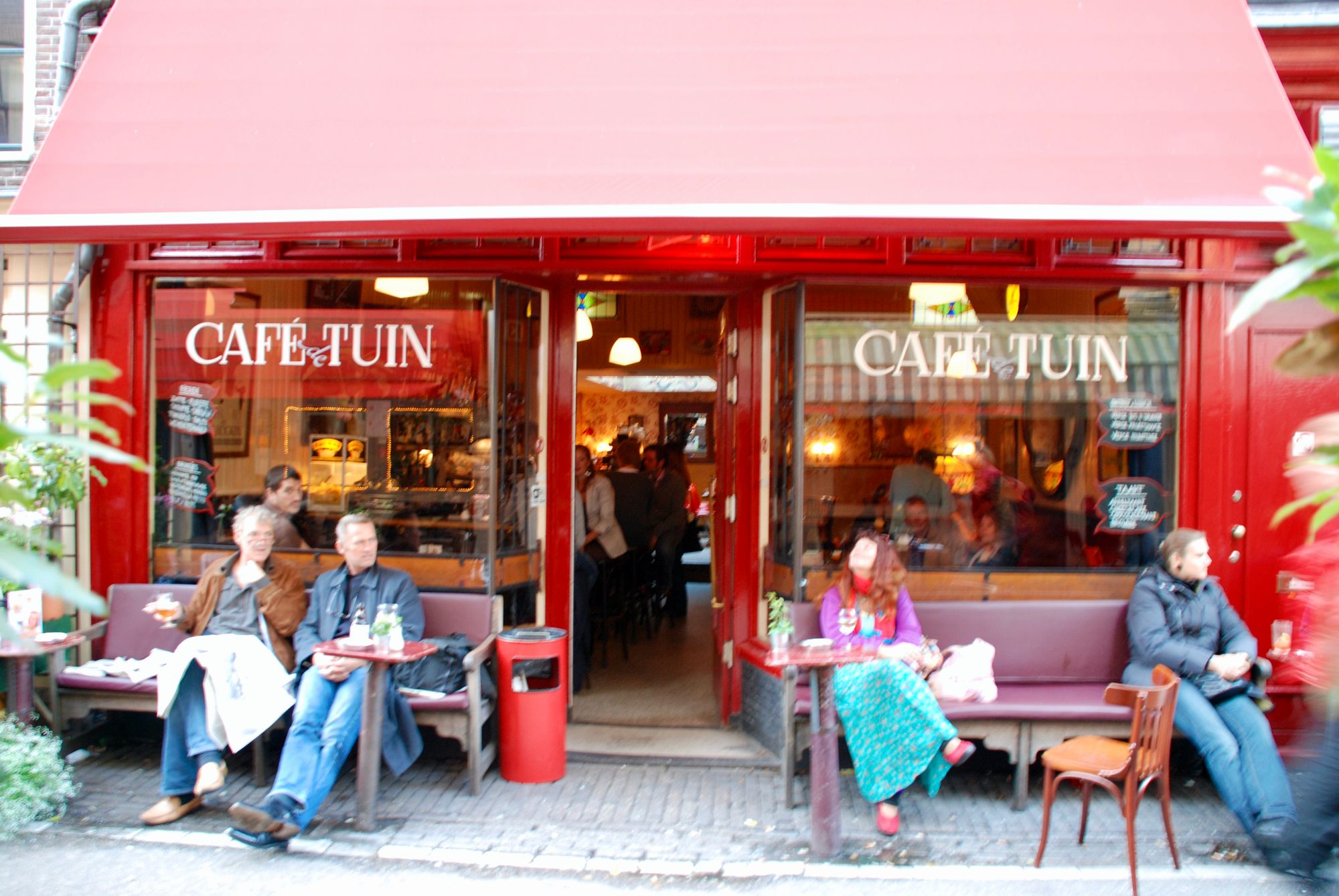
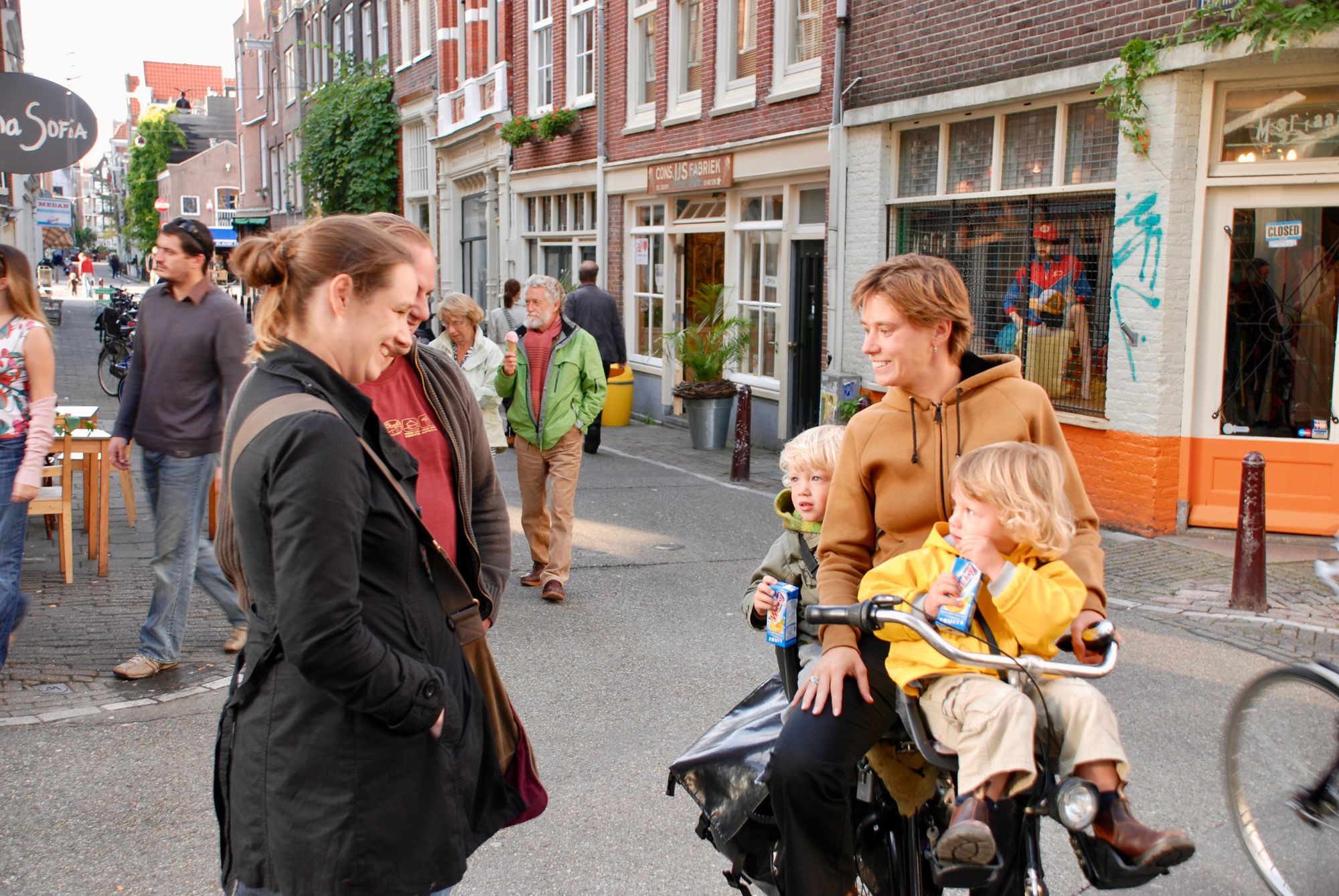
The center of neighborhood is around the slowest part of the street, in front of a cafe and a flower shop.
Amsterdam’s Jordaan District offers just such a network of streets, where the external thoroughfares feed into increasingly pedestrian-oriented and comfortable spaces. Moving into the district, shops get smaller and increasingly connected with the street. There, walking slows down to strolling, conversations grow longer, and people feel justified, and even compelled to just stop and linger, taking in the scene.
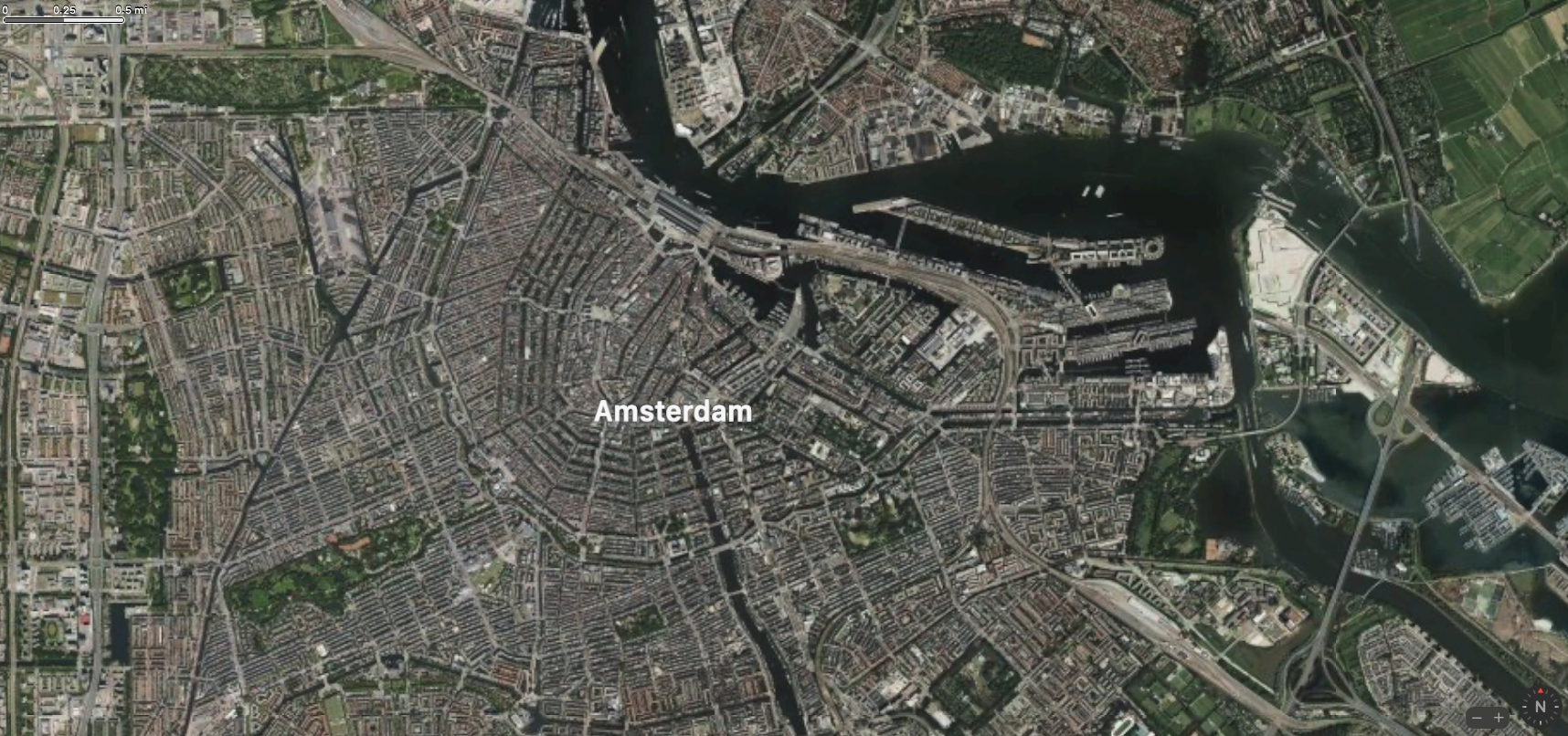
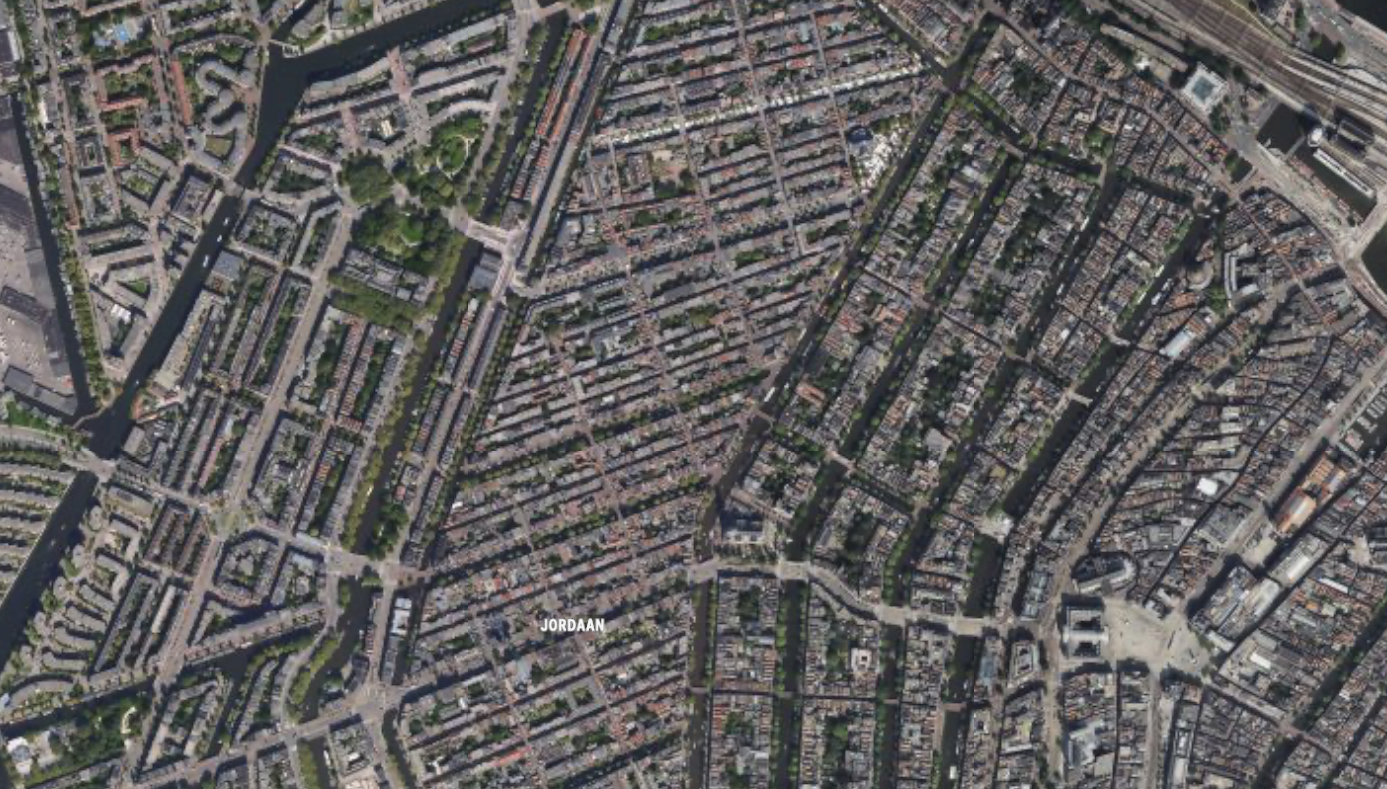
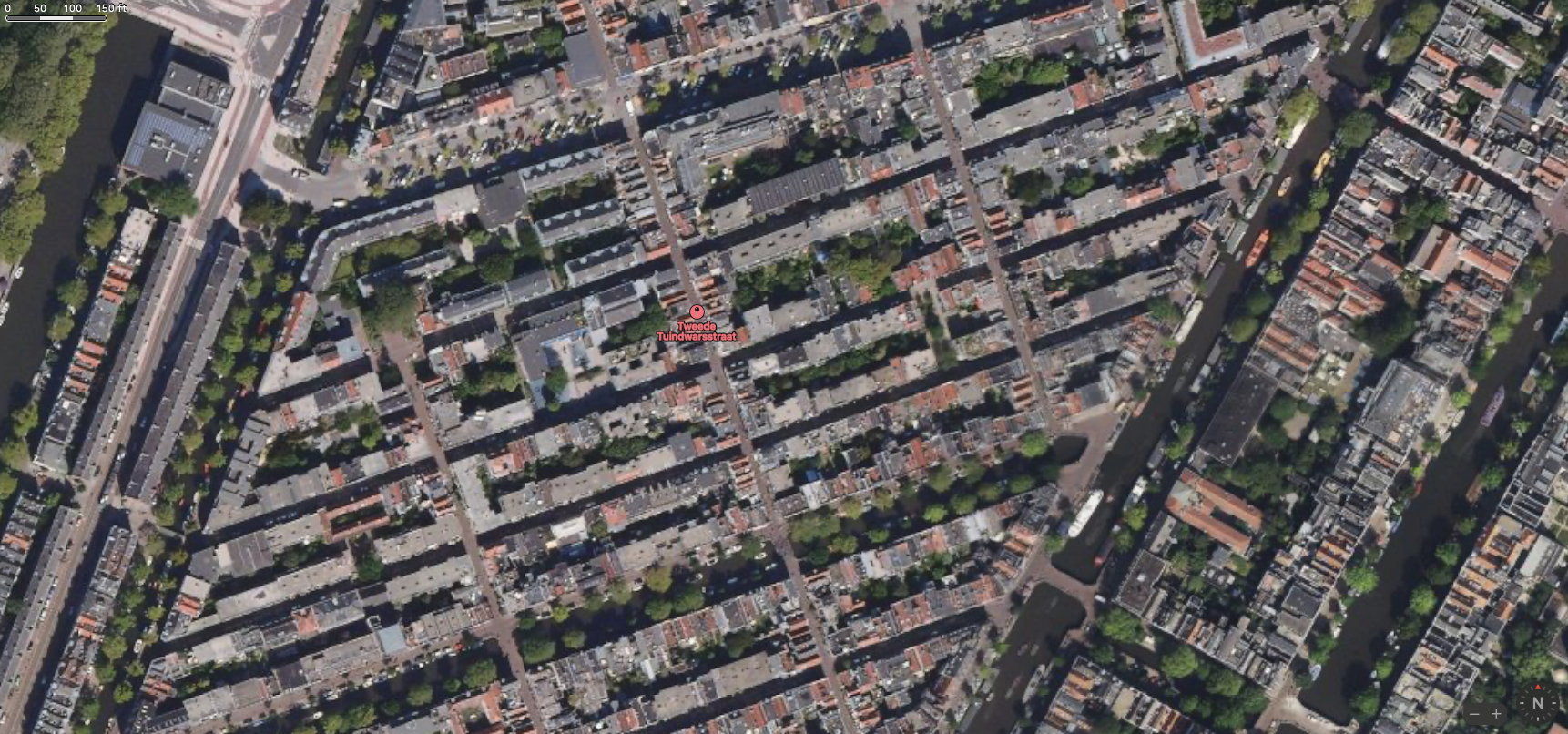
The desire to pause and experience the street peaks in a section of Tuindwarsstraat near the center of the surrounding district. The nexus of a few destinations; a flower shop next to a bar, and across the street from a cafe, creates what is perhaps the slowest place in the neighborhood. Each passerby moves through the space with their attention engaged, making eye contact and often stopping to read a menu, greet a friend or purchase some flowers. These patterns of use all feed into one another, compounding into an even more attractive place to spend time.
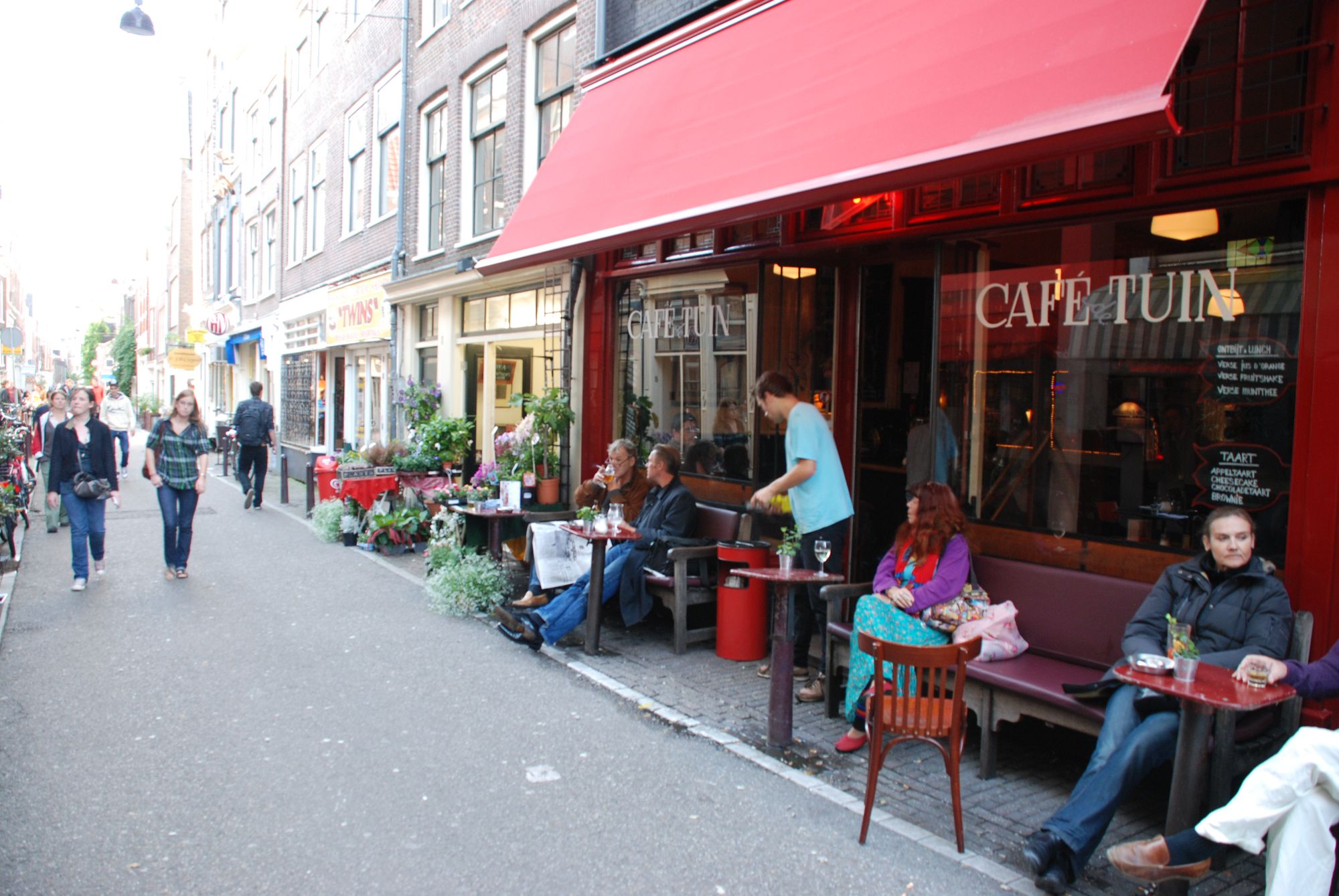
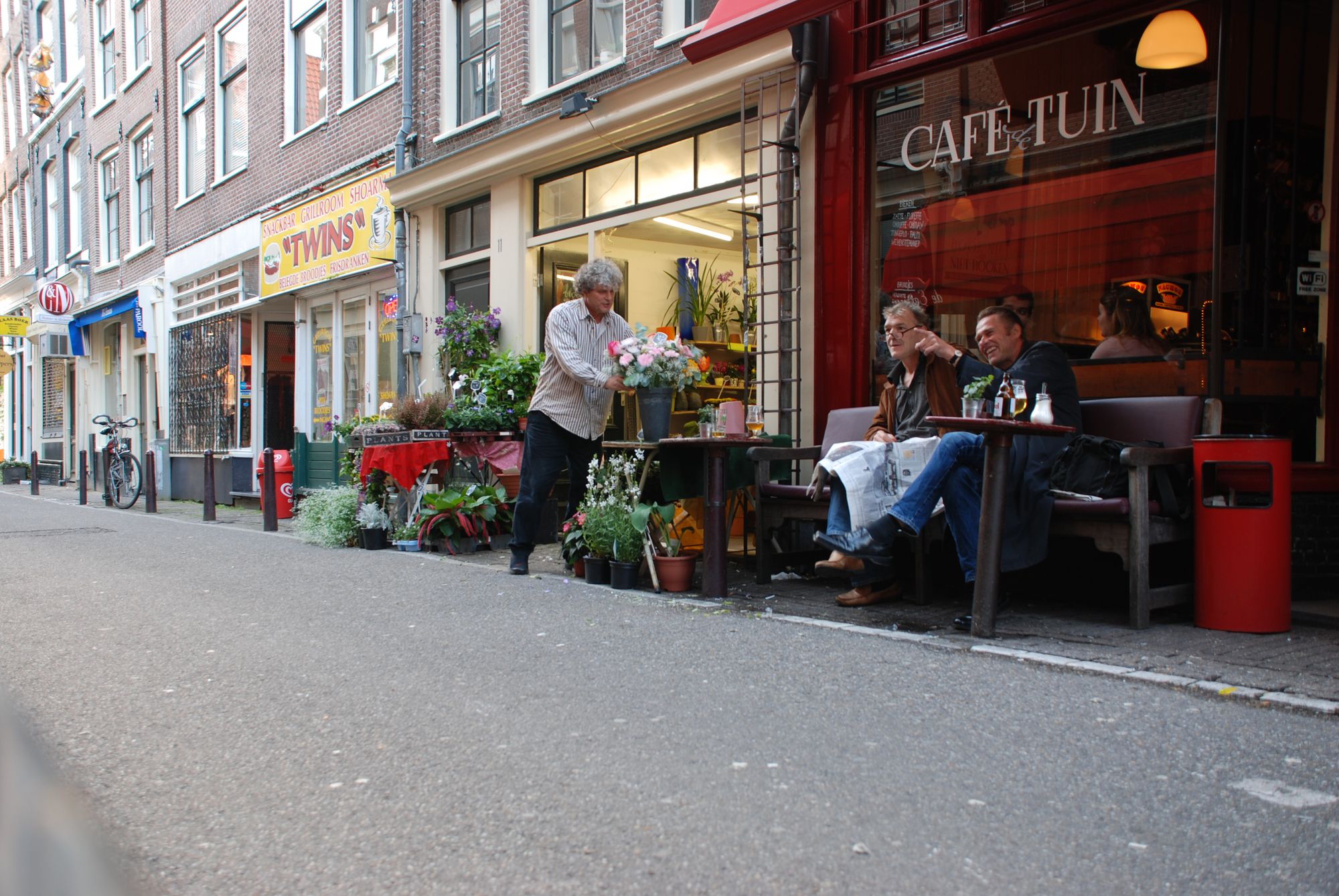
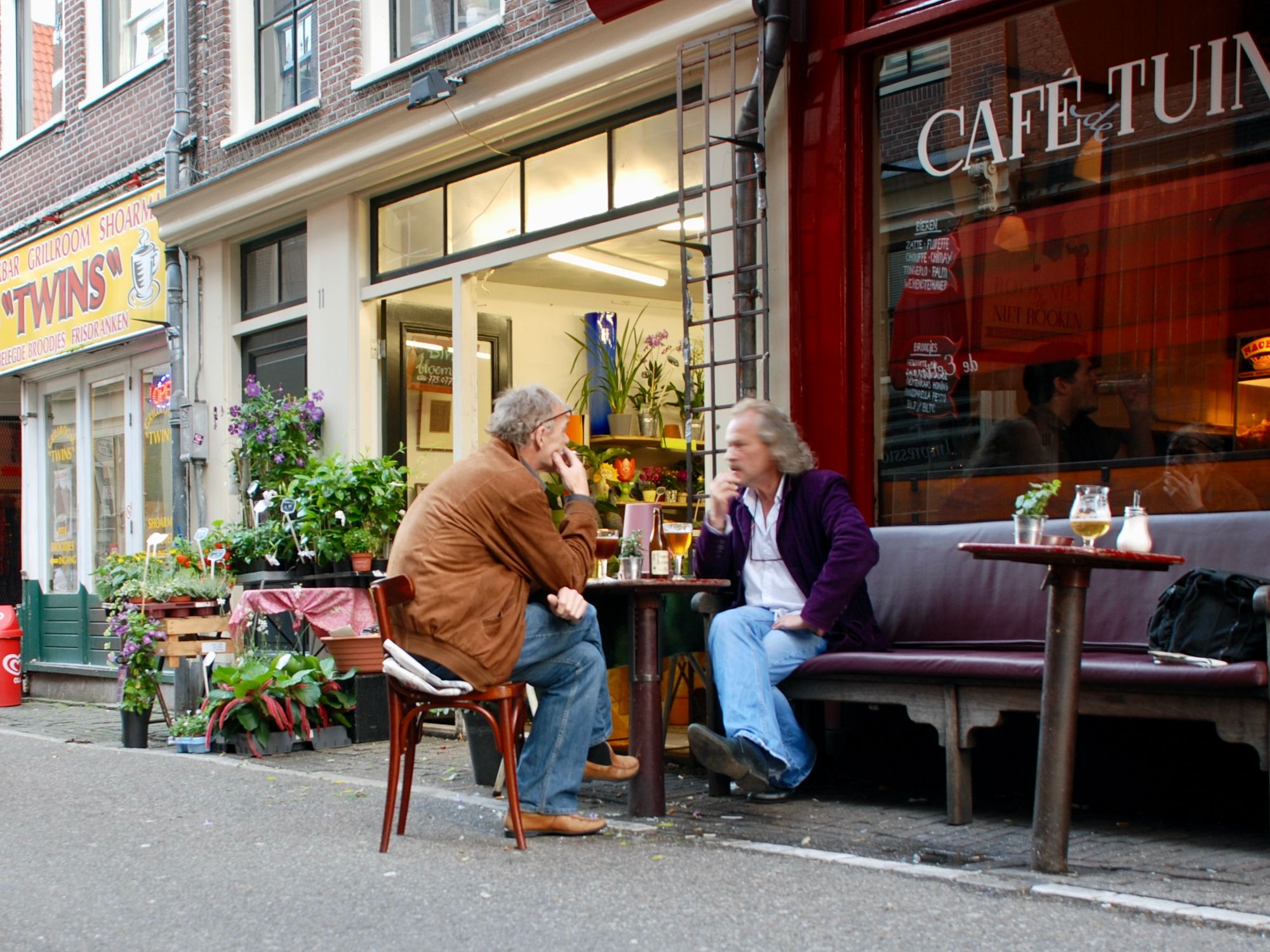
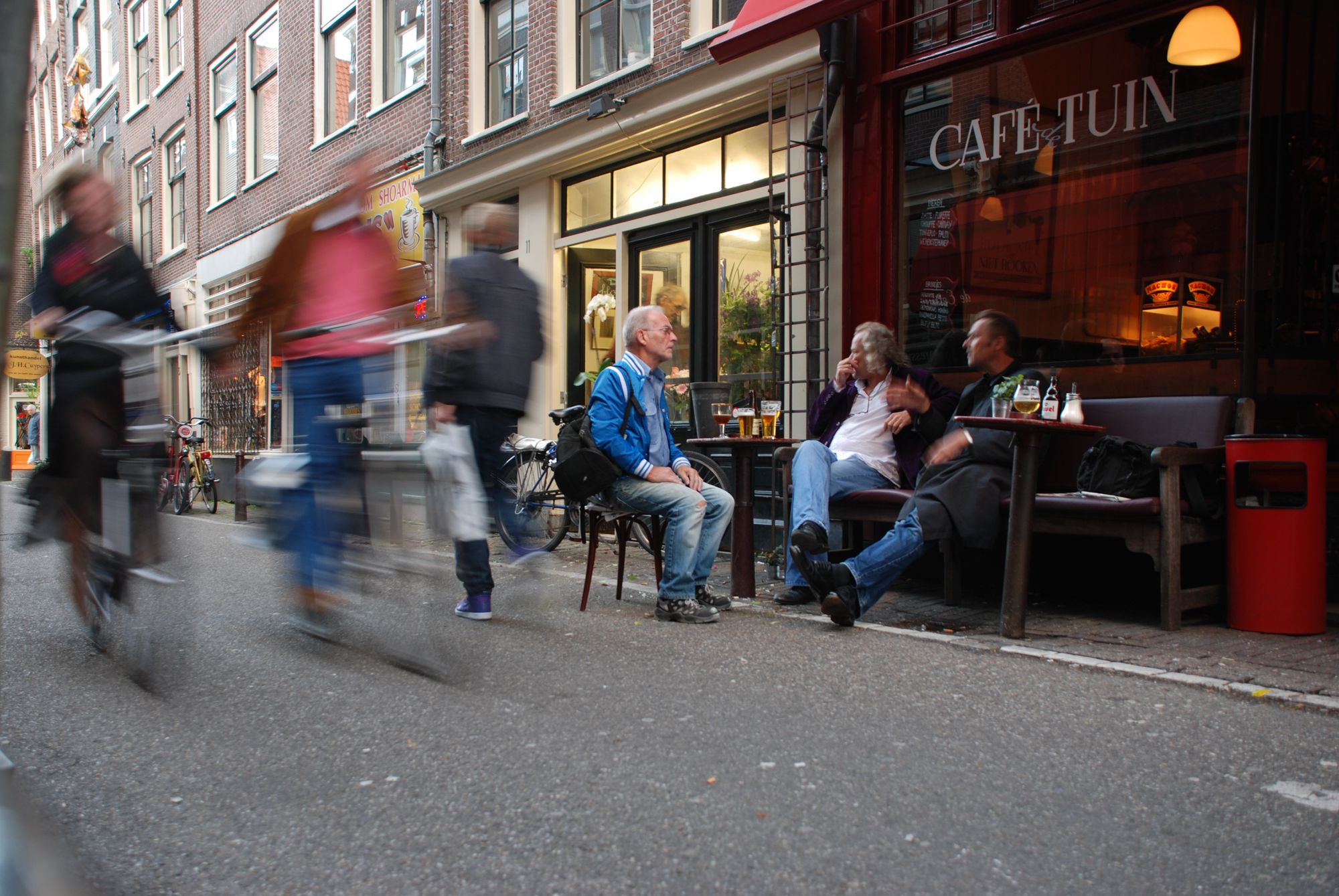
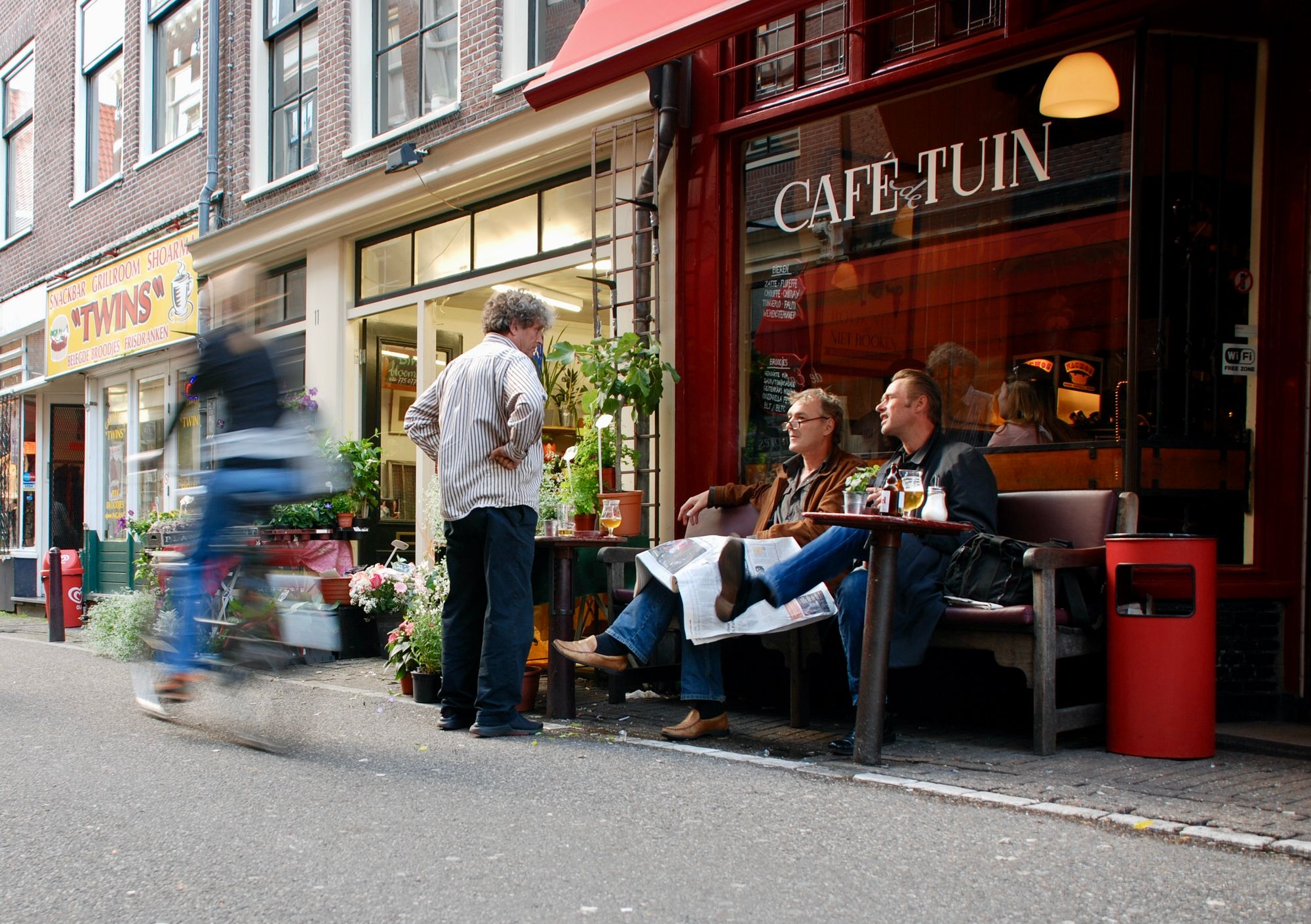
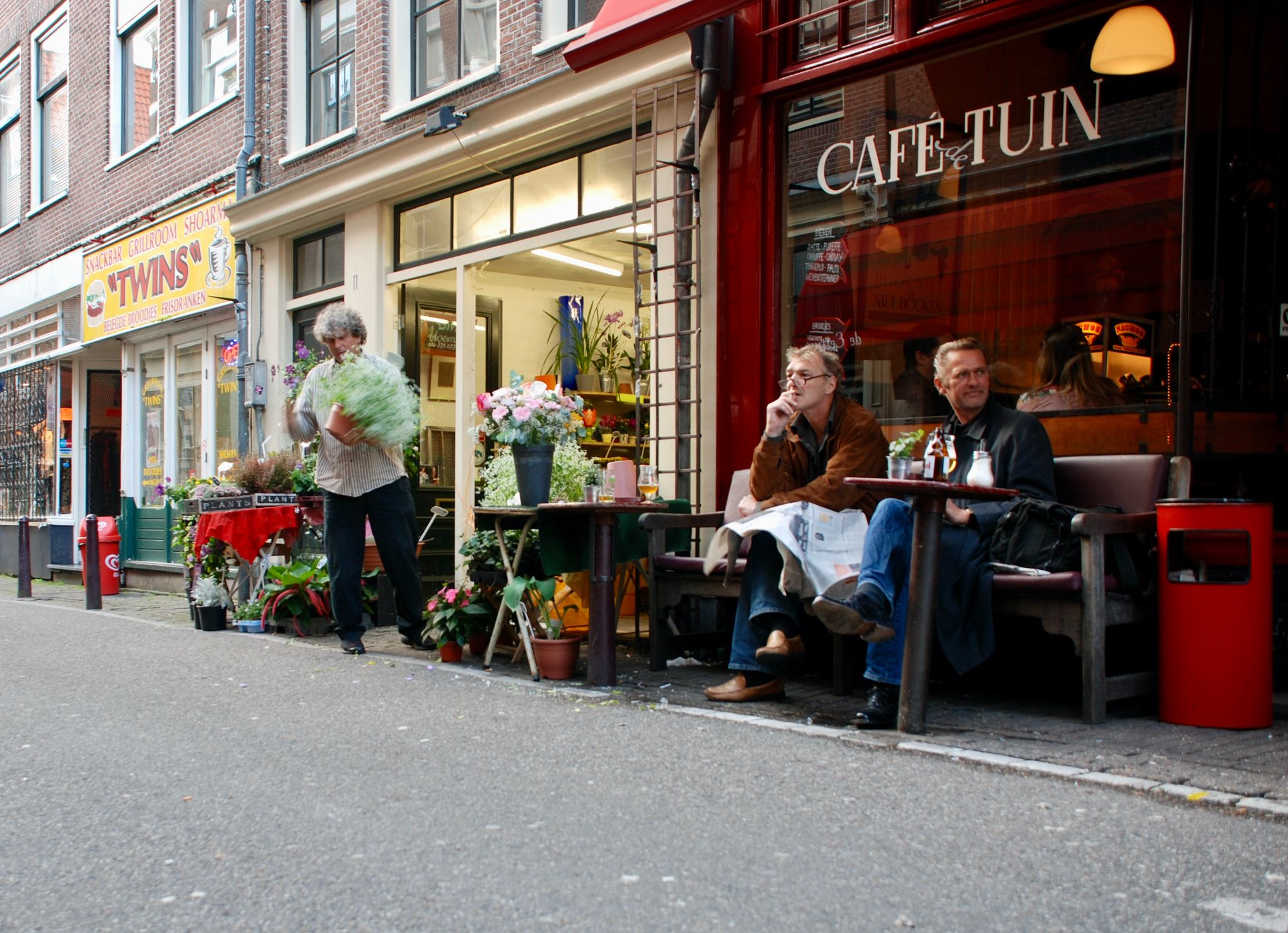
While the neighborhood has many social hubs, perhaps the most engaging is at the center by a cafe and a flower shop.
While the pace is slow, the space supports dynamic experiences, exchanges, and interactions for its participants. The vibrancy of these interactions is buttressed by the broad diversity of people, all allowed to feel equal and respected in this space, while being brought together by the strong cultural identity of the setting. The greatest indicators of its comfort, and perhaps its greatest achievements, are its sociability, reflected in consistent displays of engaged conversation, picture taking, and affectionate greetings.
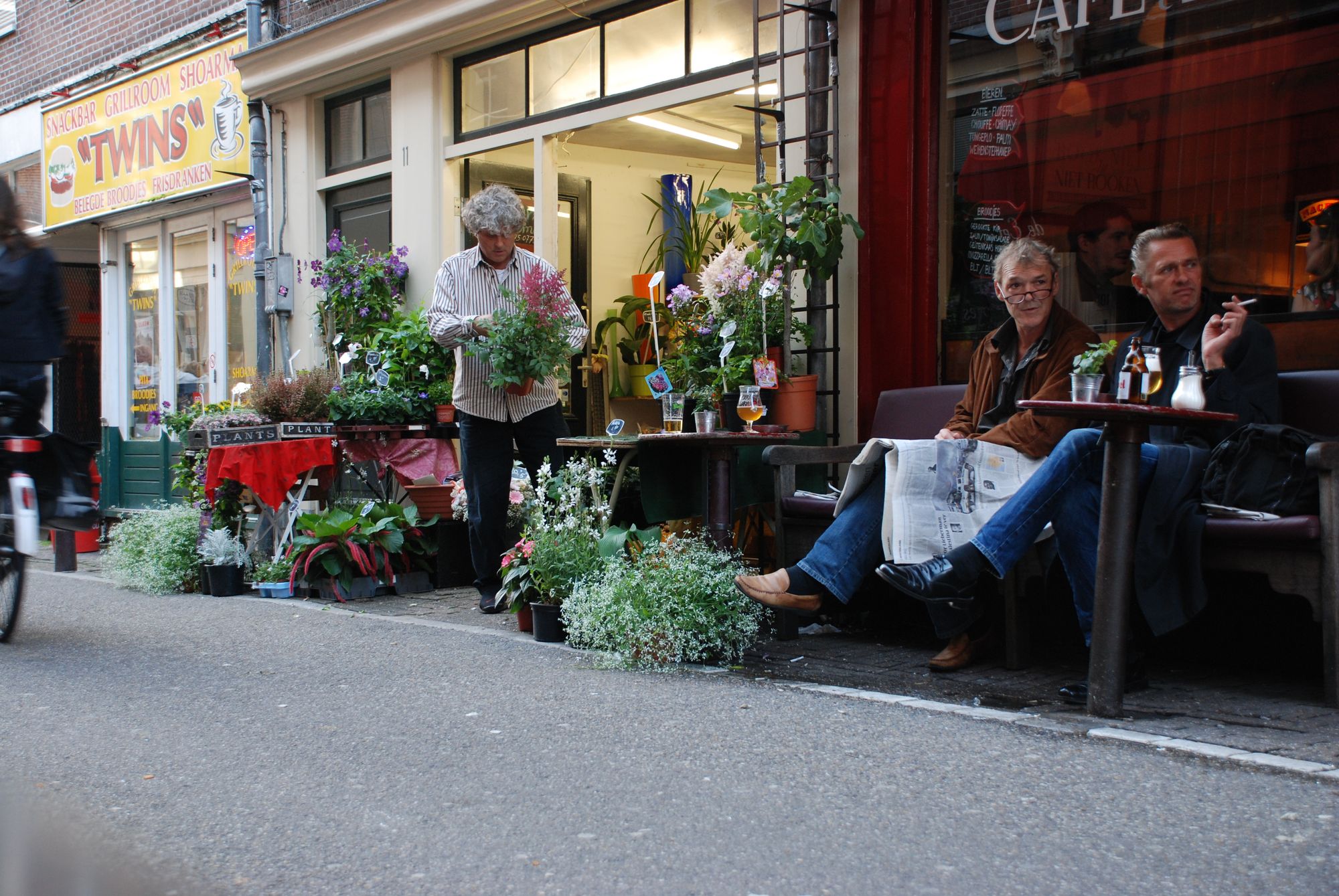
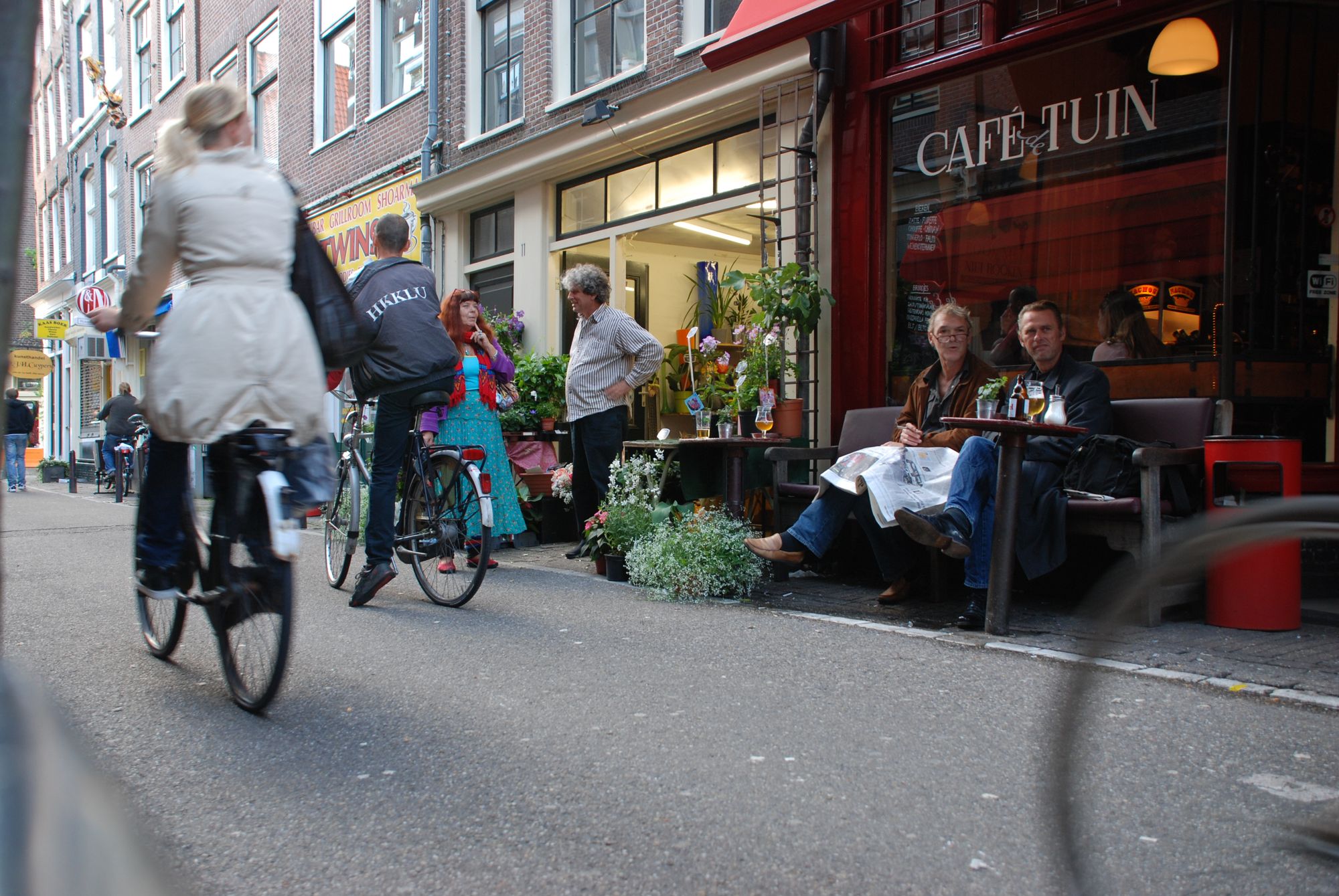
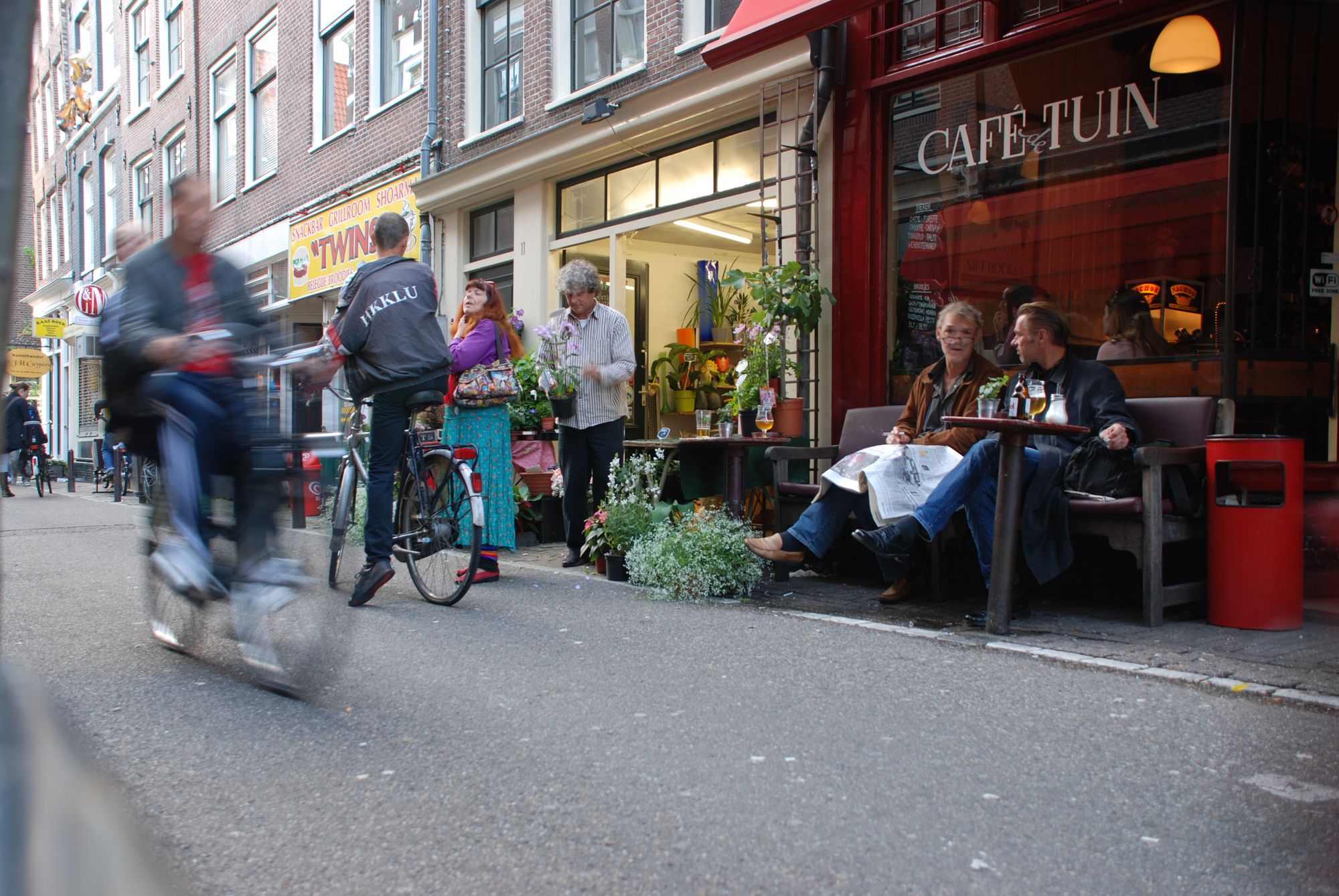
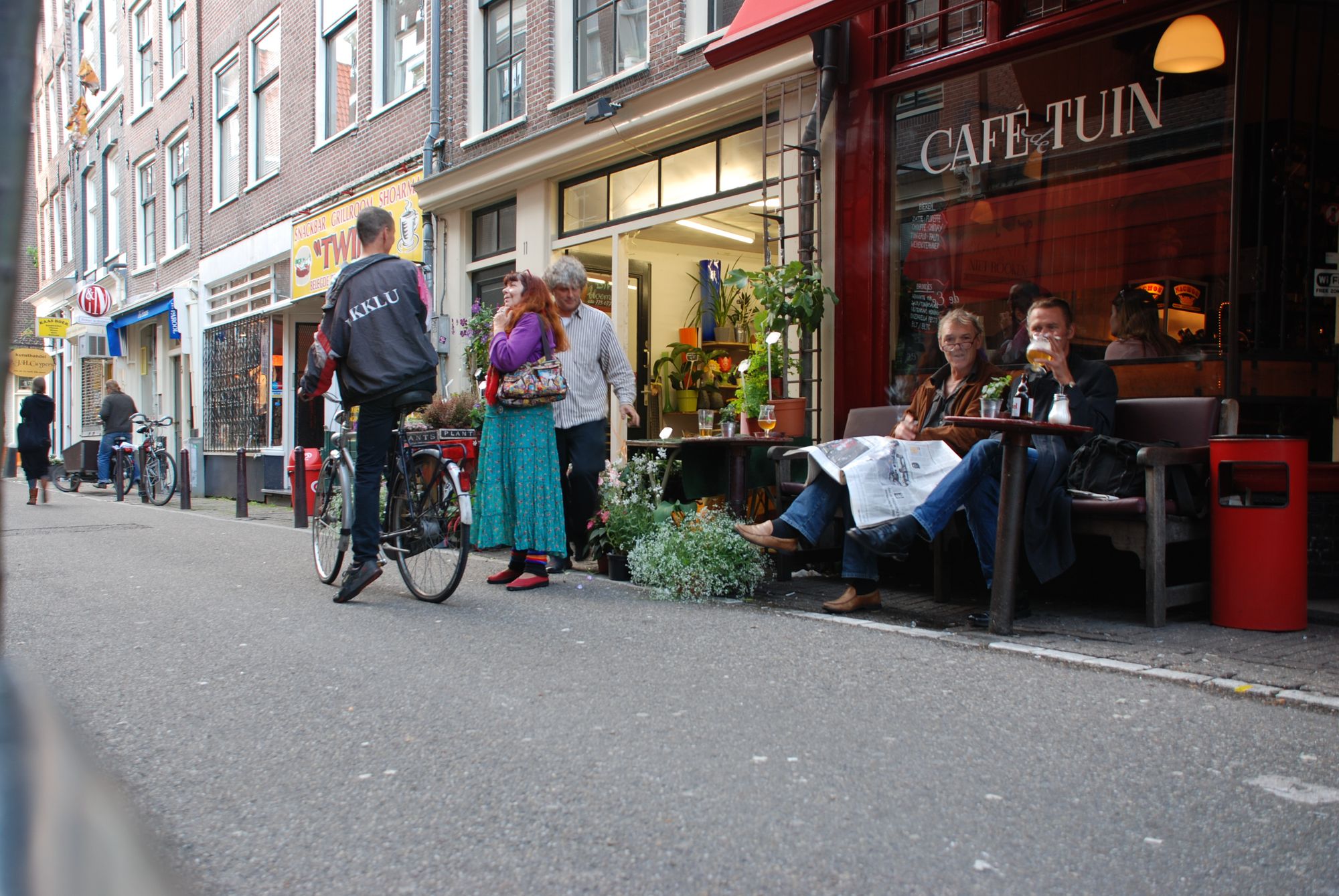
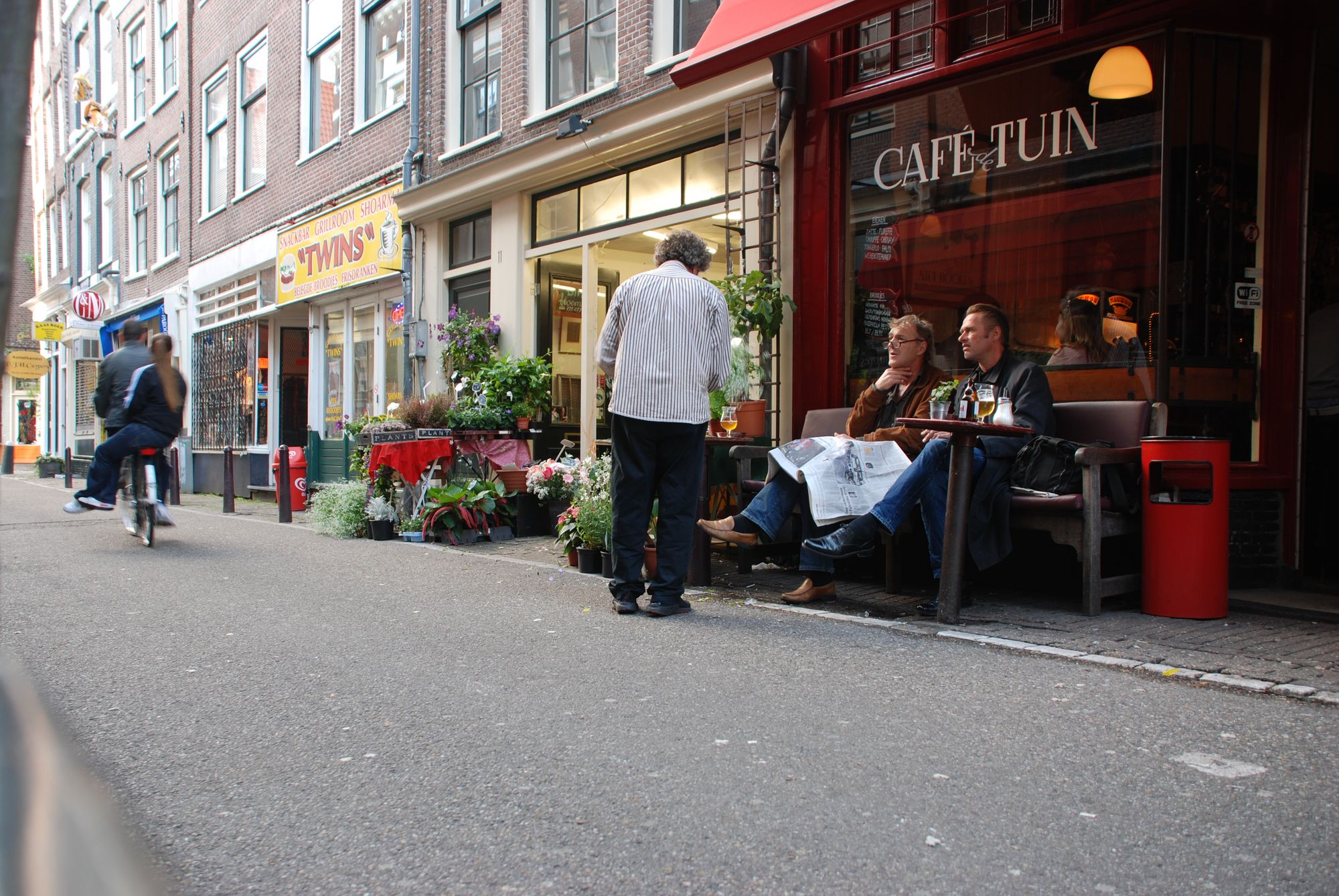
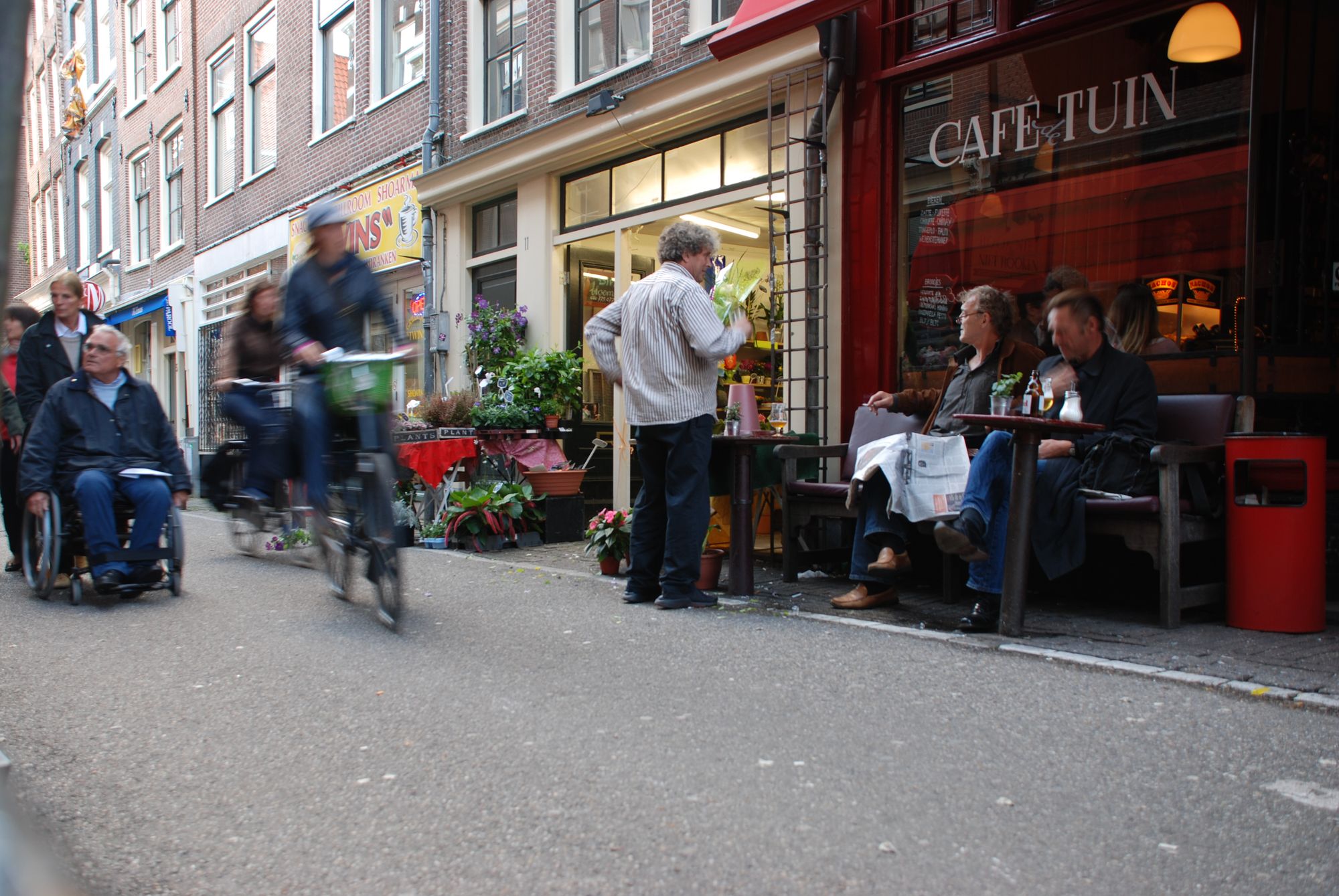
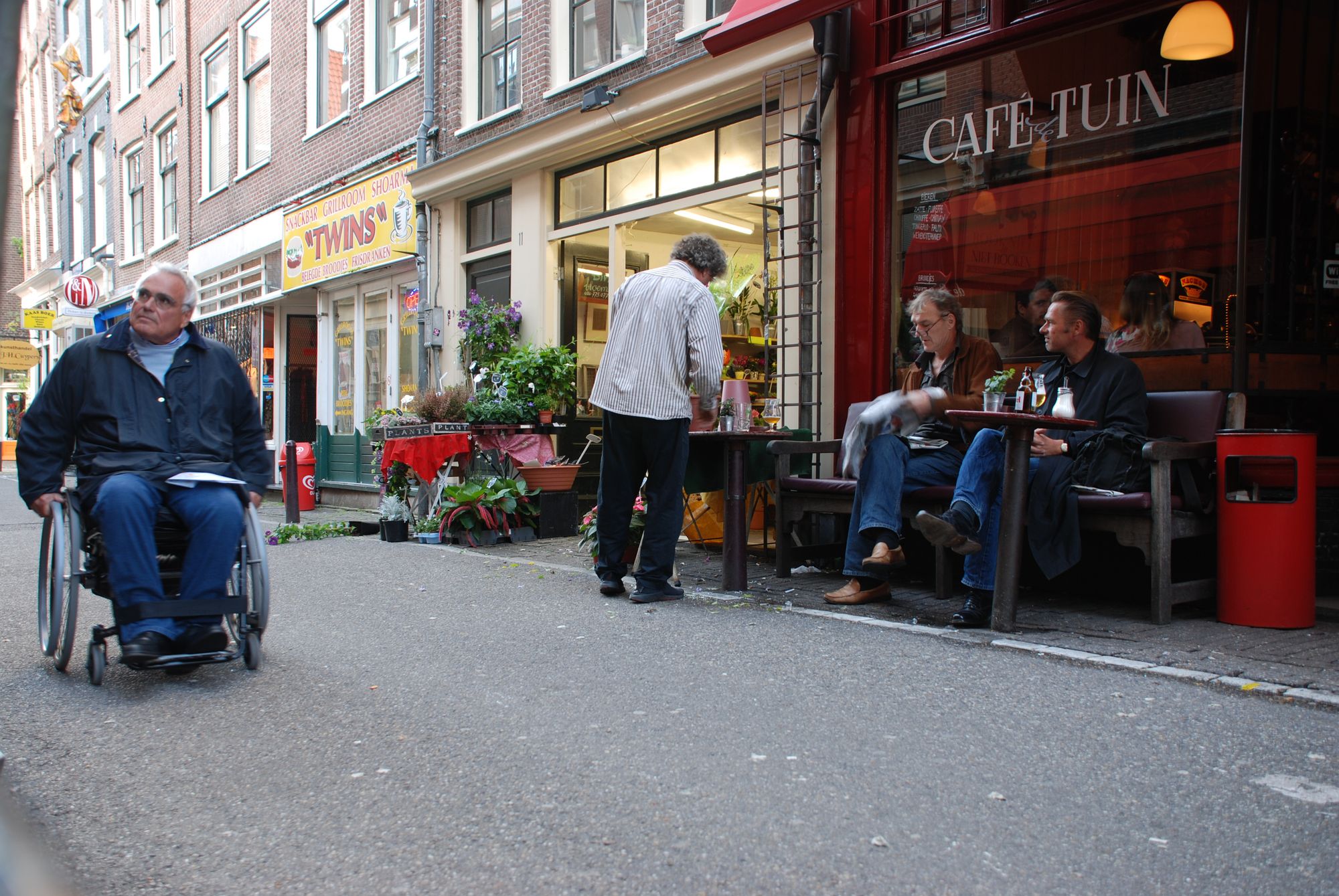
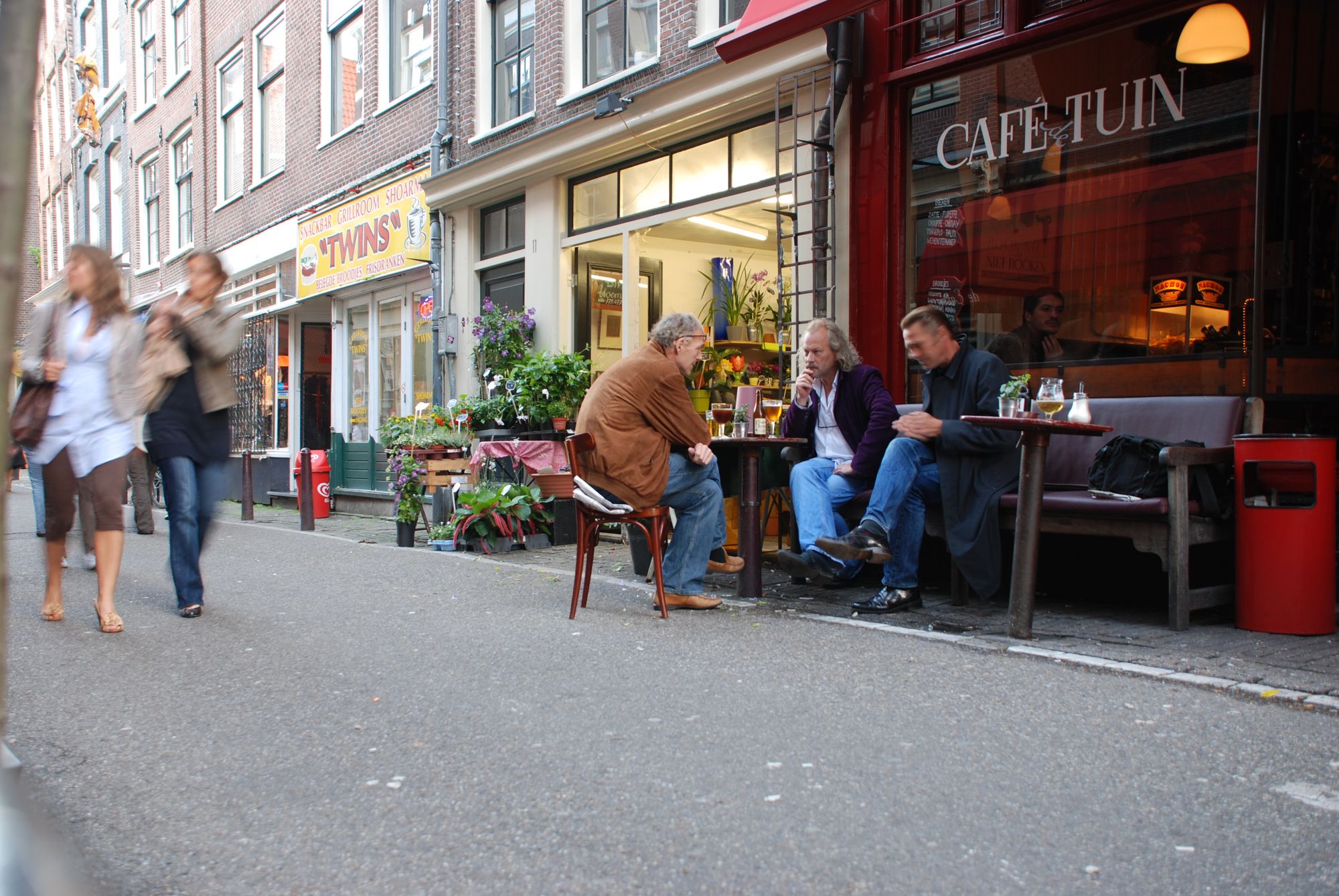
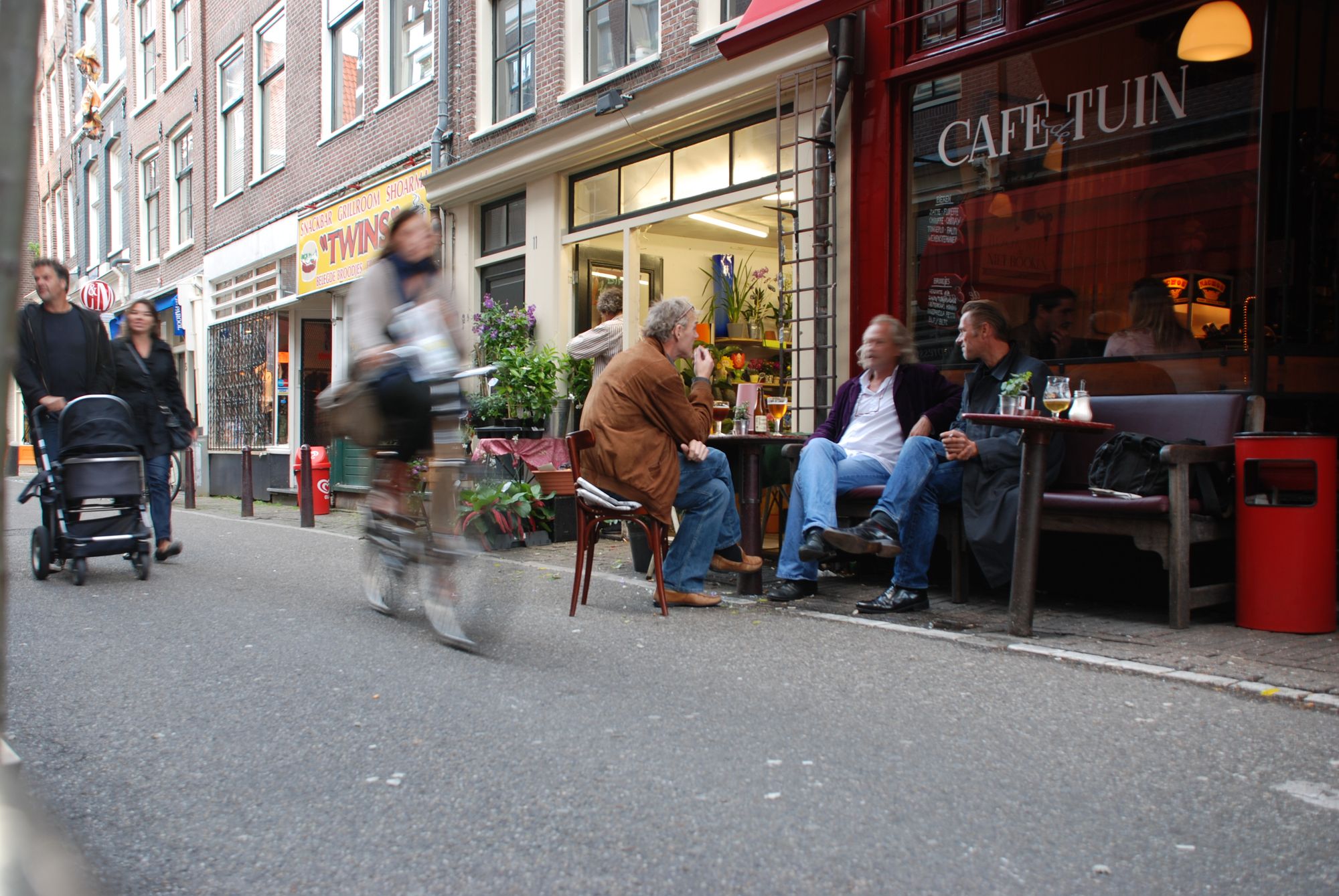
The simple patterns of social life at this location as displayed on this one evening reflect a comfort and sociability of that few streets achieve.
While not technically defined as a “shared space” or “complete street,” this spot succeeds as both. All types of traffic can easily and comfortably access this place and benefit from its qualities. Even a passing truck driver is able to engage in the social life of the street, stopping briefly to talk with café patrons. But because of the strong hierarchy of streets surrounding the Jordaan District, the transit and bike orientation of the city, and the slowness of this street, it does not carry significant traffic.
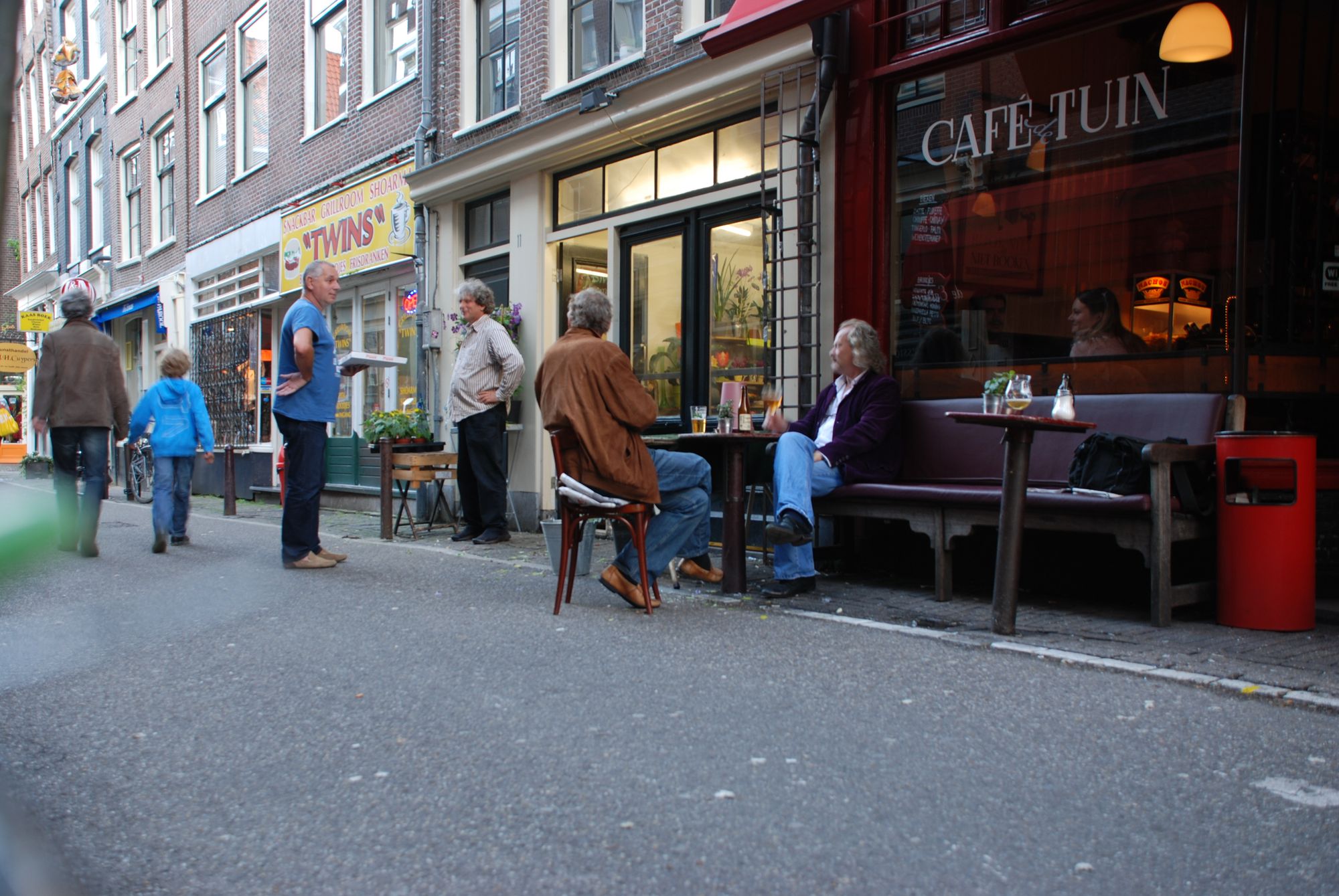
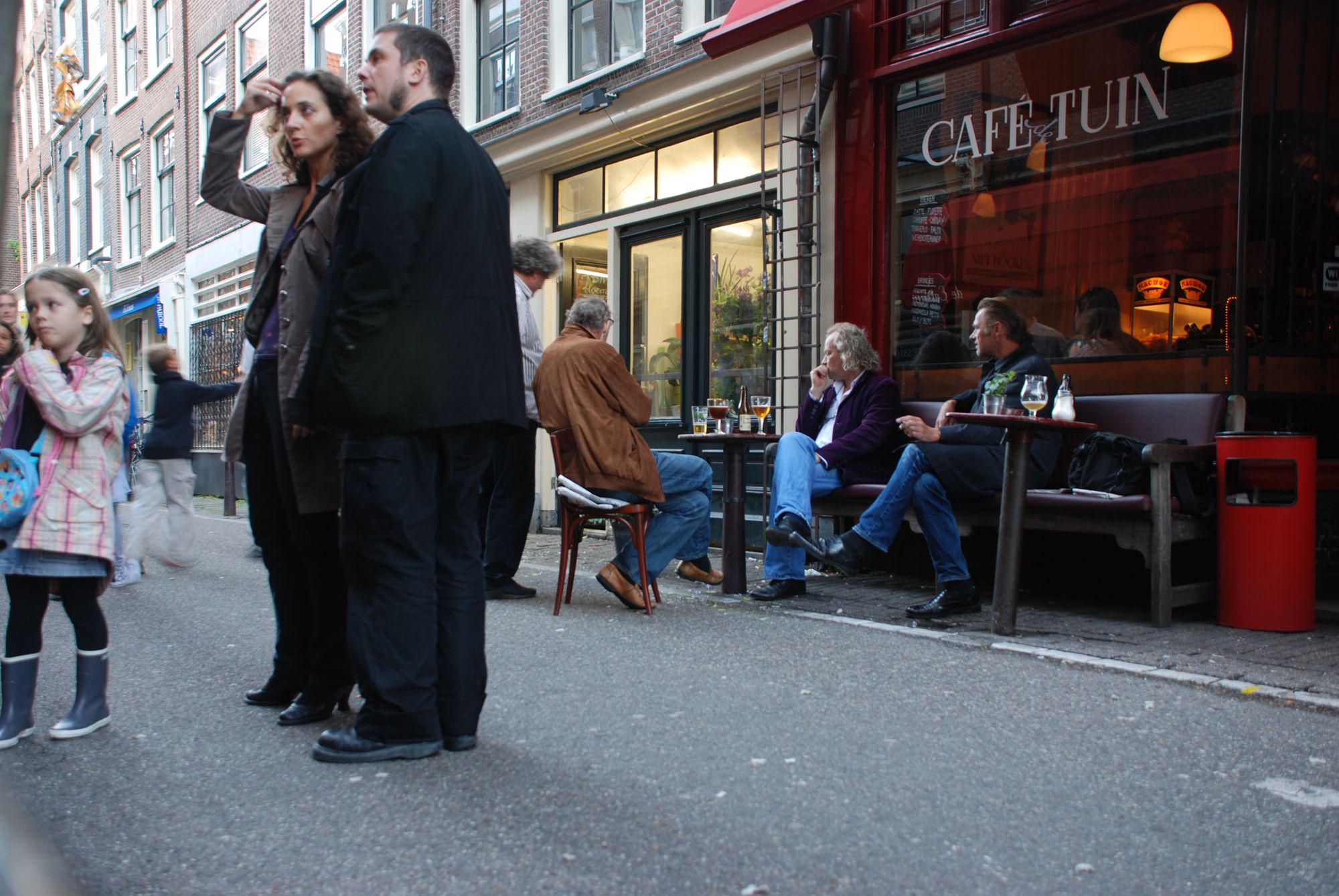
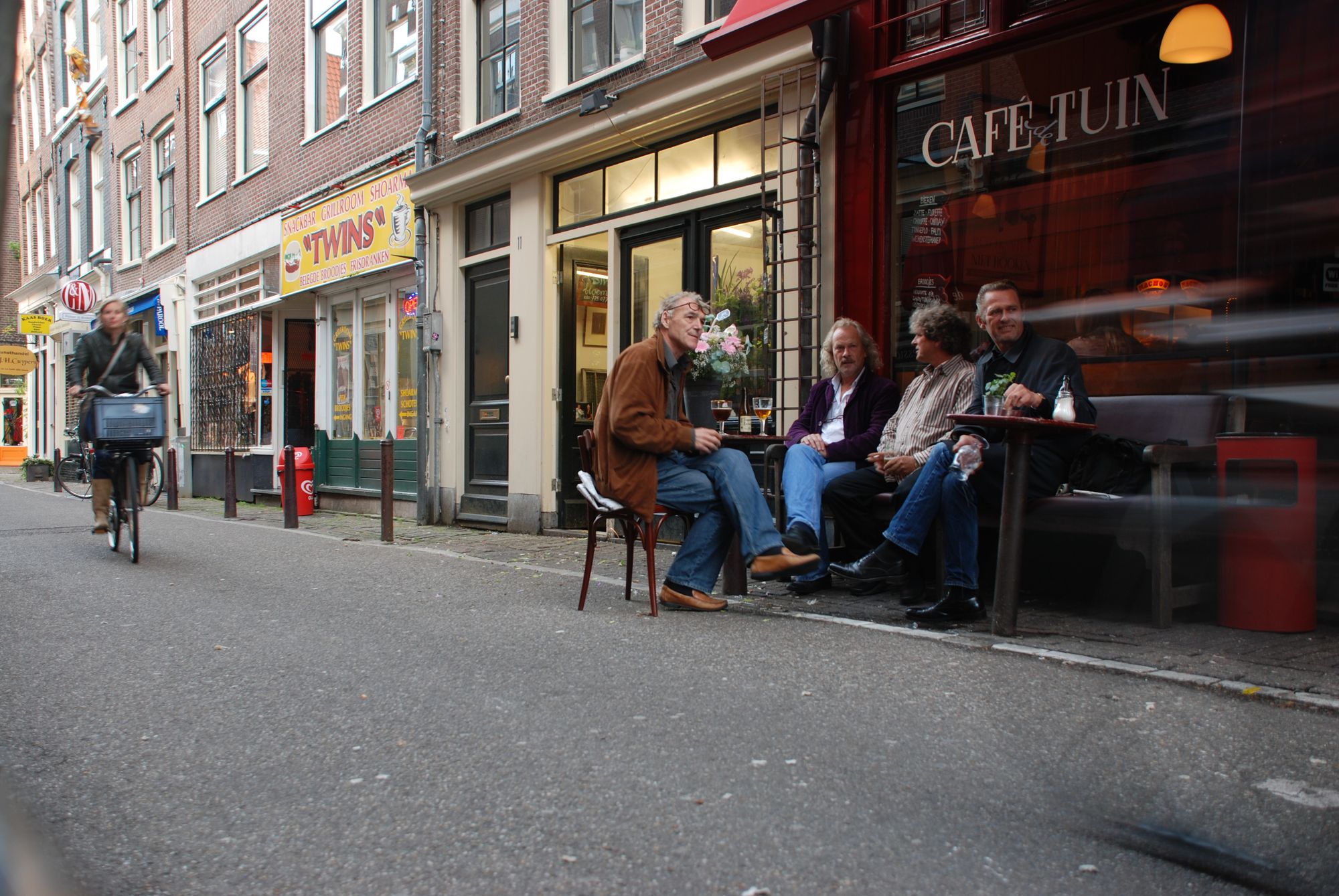
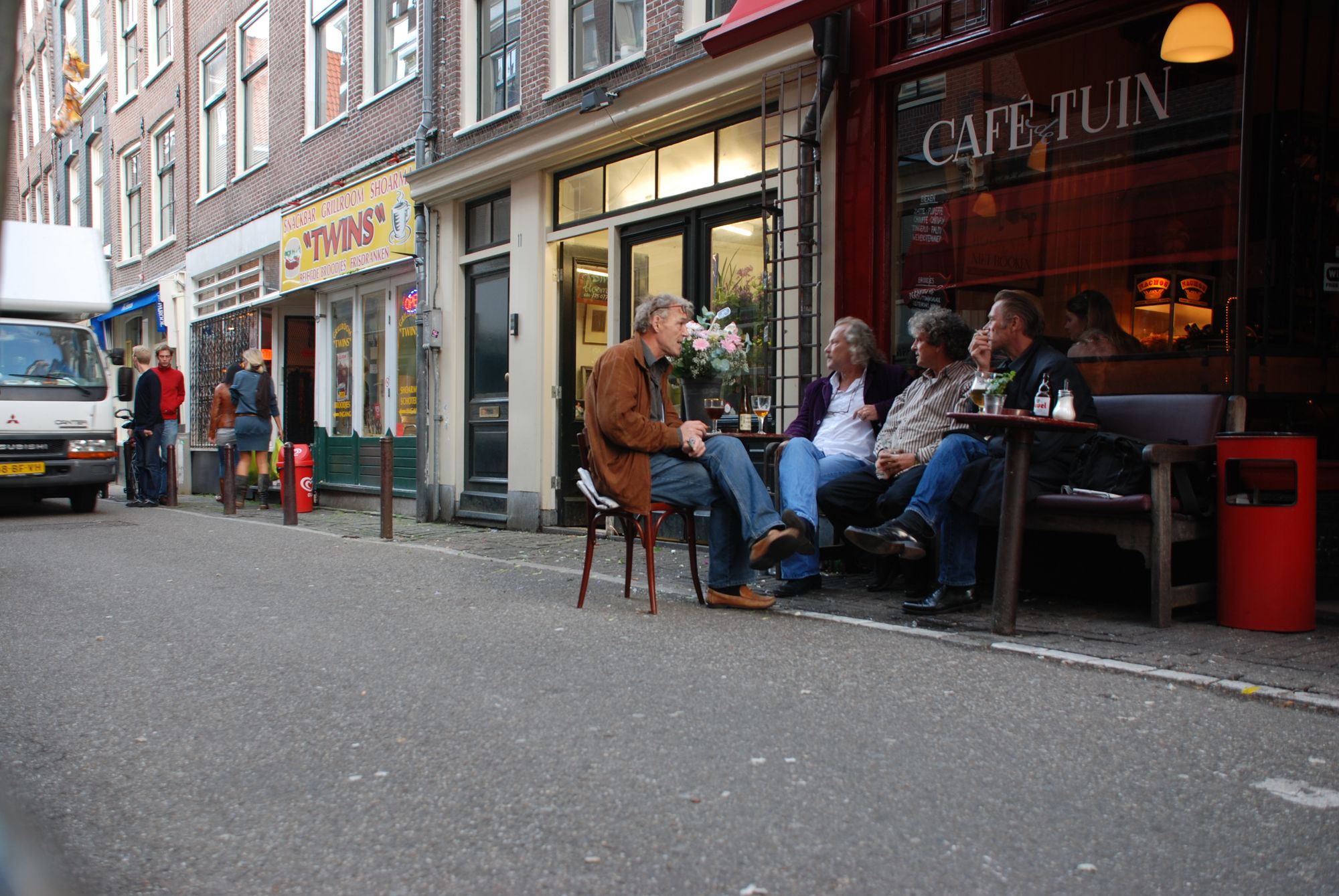
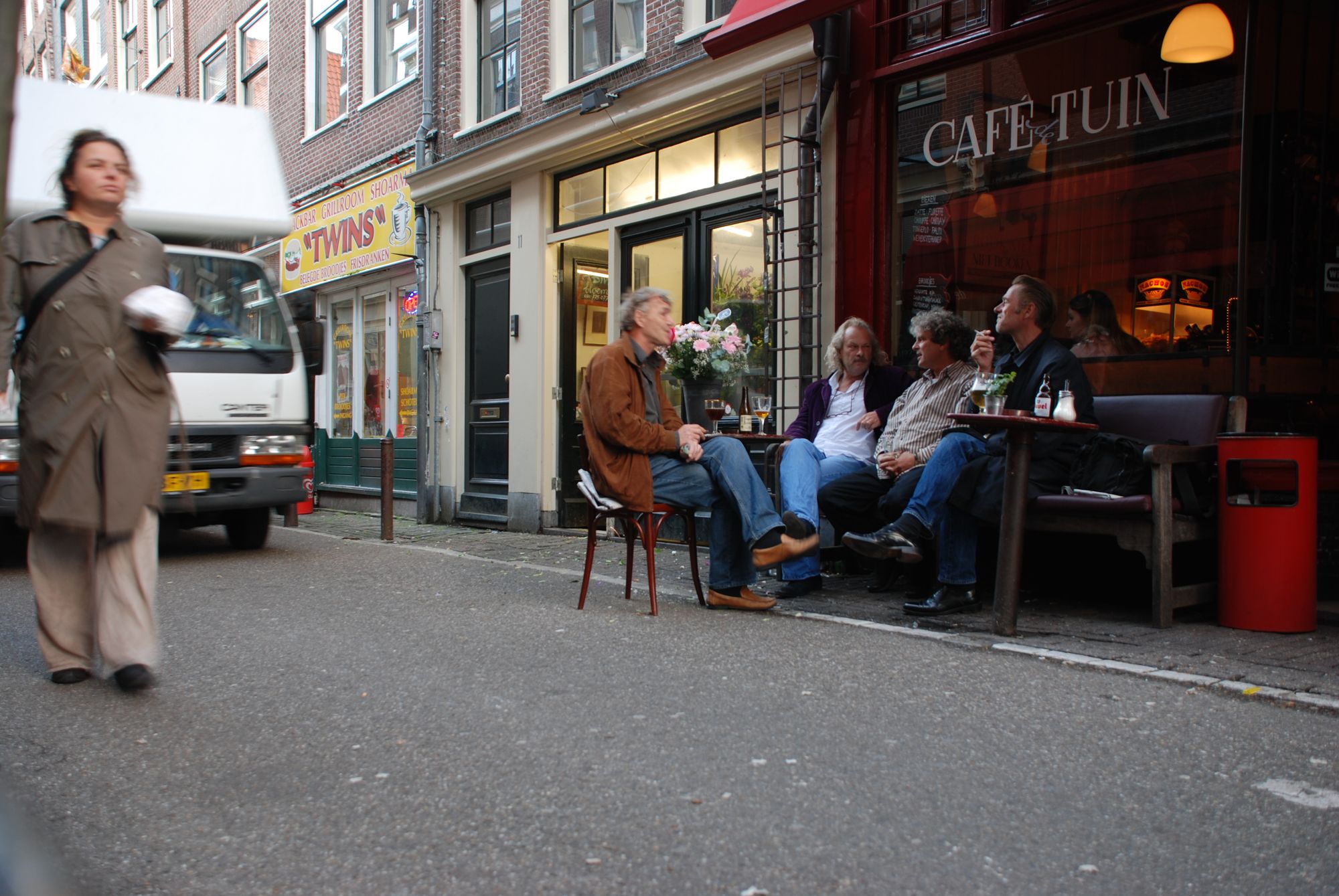
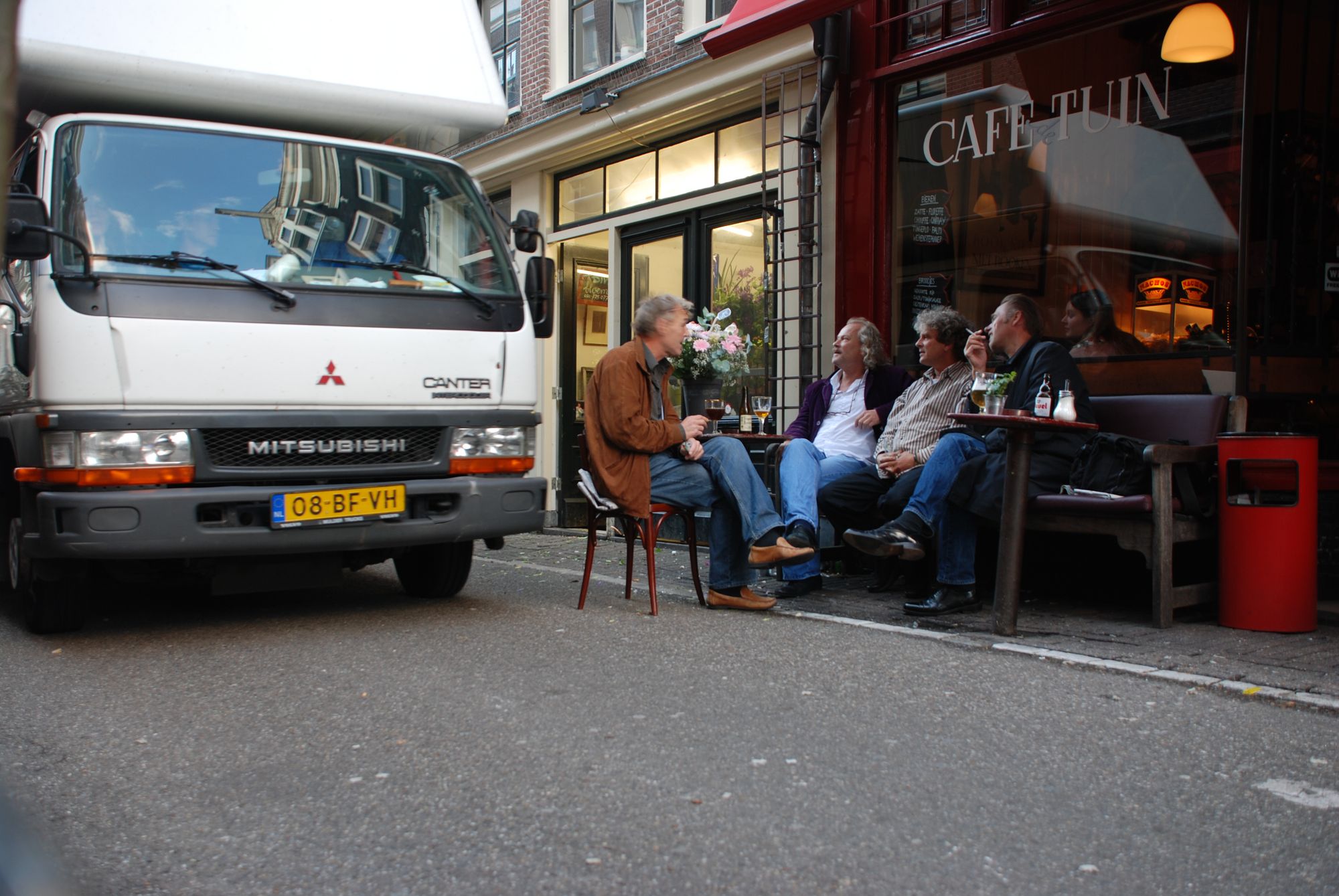
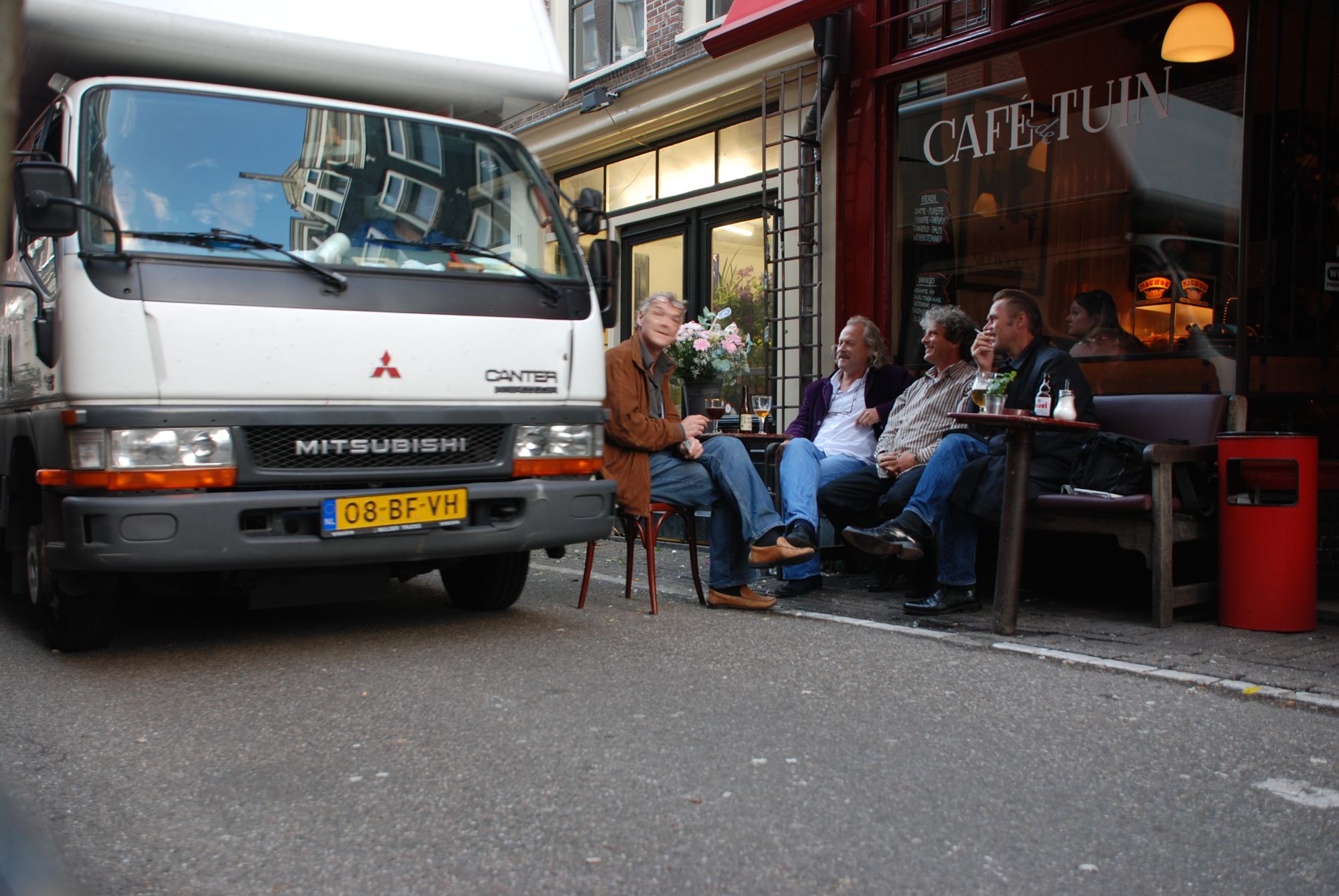
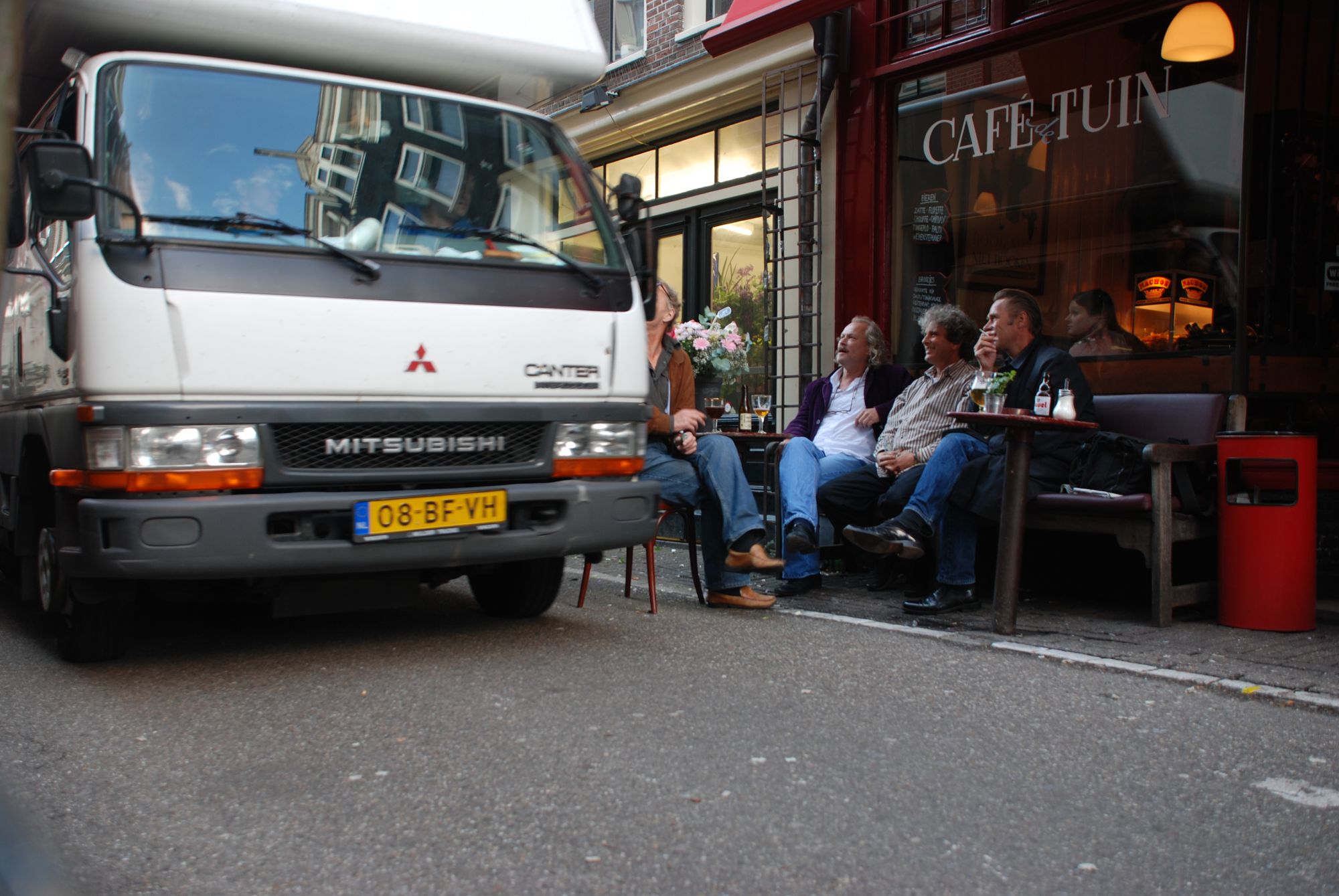
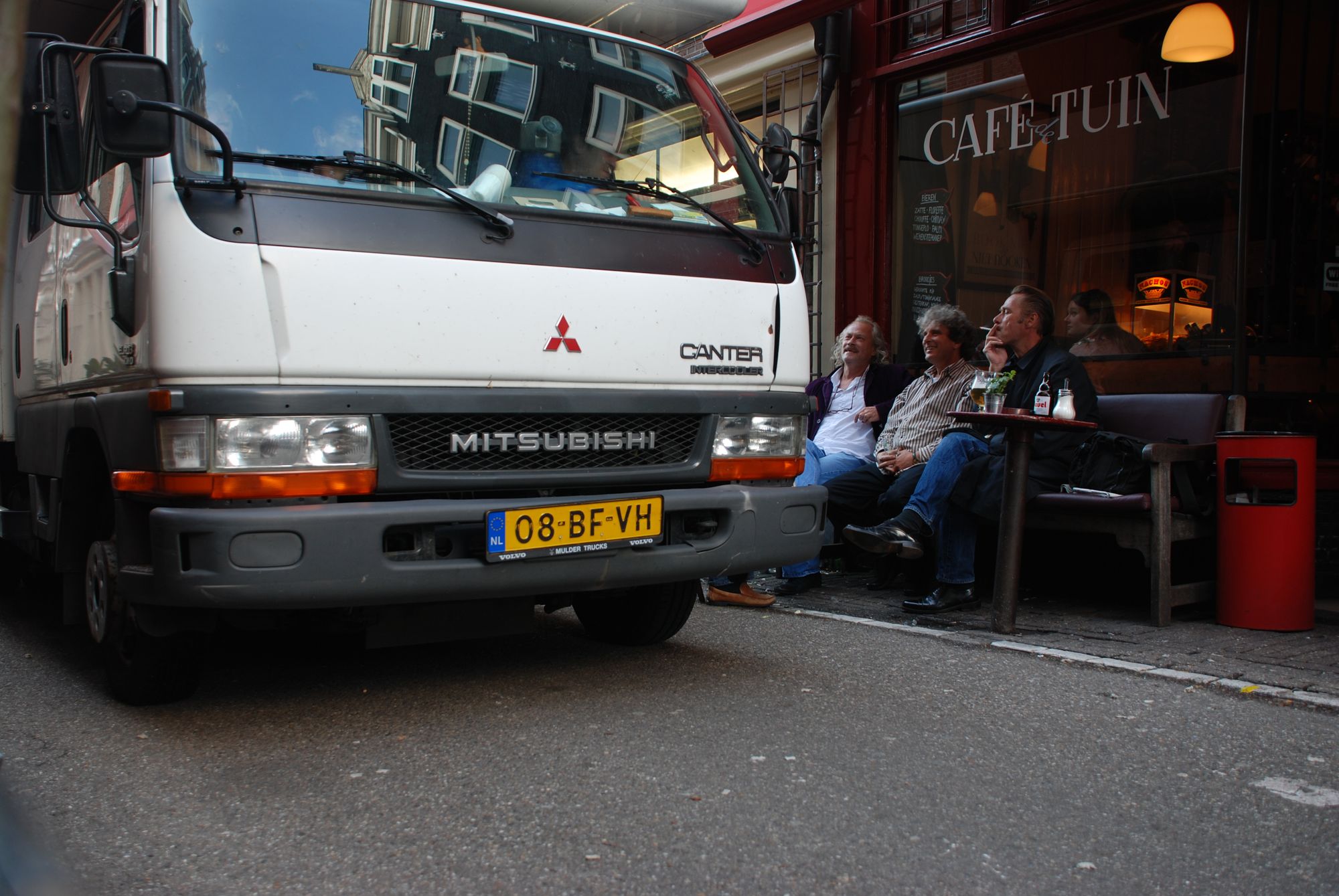
Bikes, cars and trucks all use the street, frquesnt slowing to engage with, and contribute to the social life.
There are many features of the street to which one can attribute its dynamism, from the neighbors and tourists who traverse it, to the Dutch culture and related scale, density and style of urban design. Indeed, it is through these contexts that we usually evaluate, explain and experience such spaces. Yet the experience of these fundamental community outcomes; the patterns of social life, of a street performing as a place, is something infinitely possible in human settlements, everywhere.
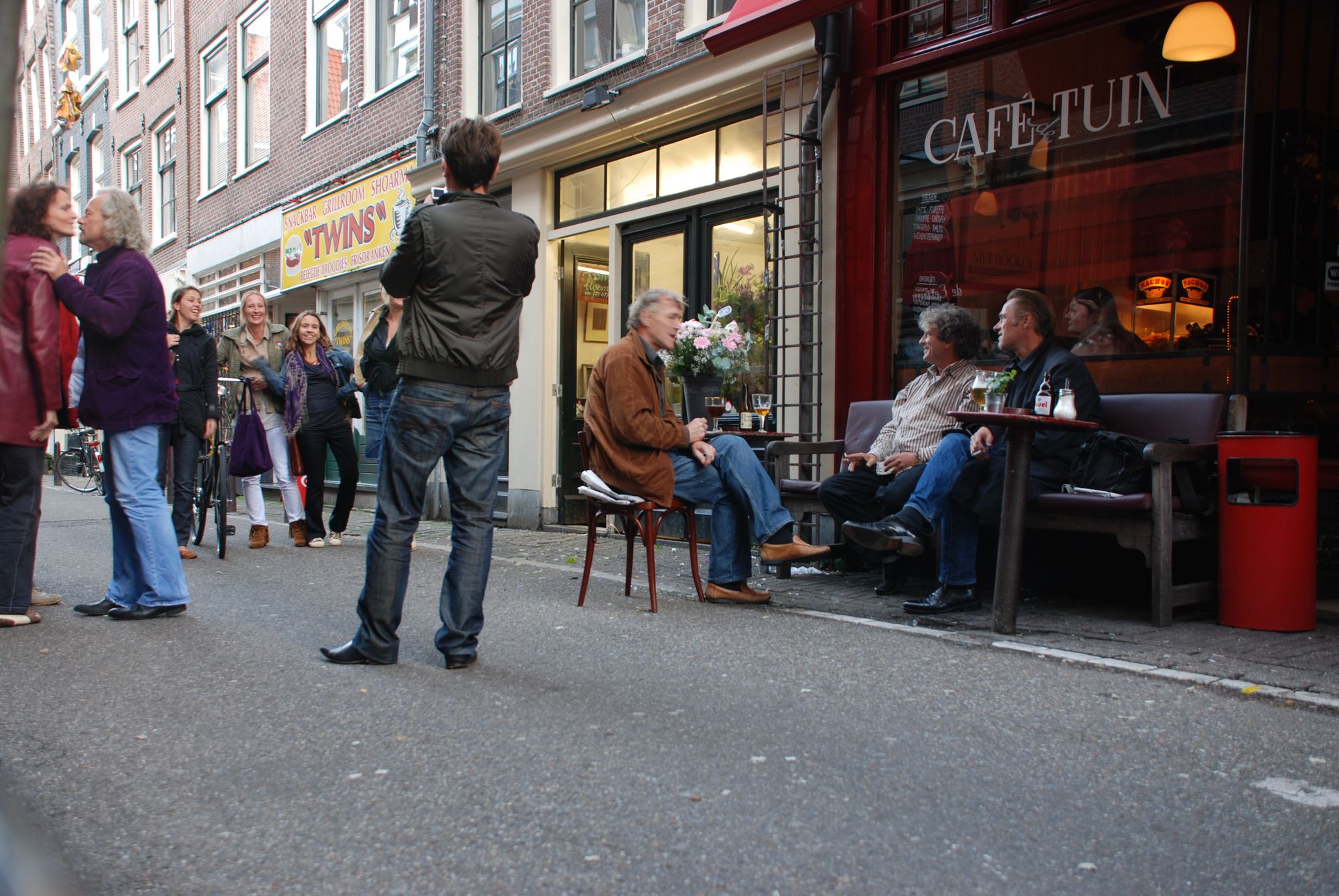
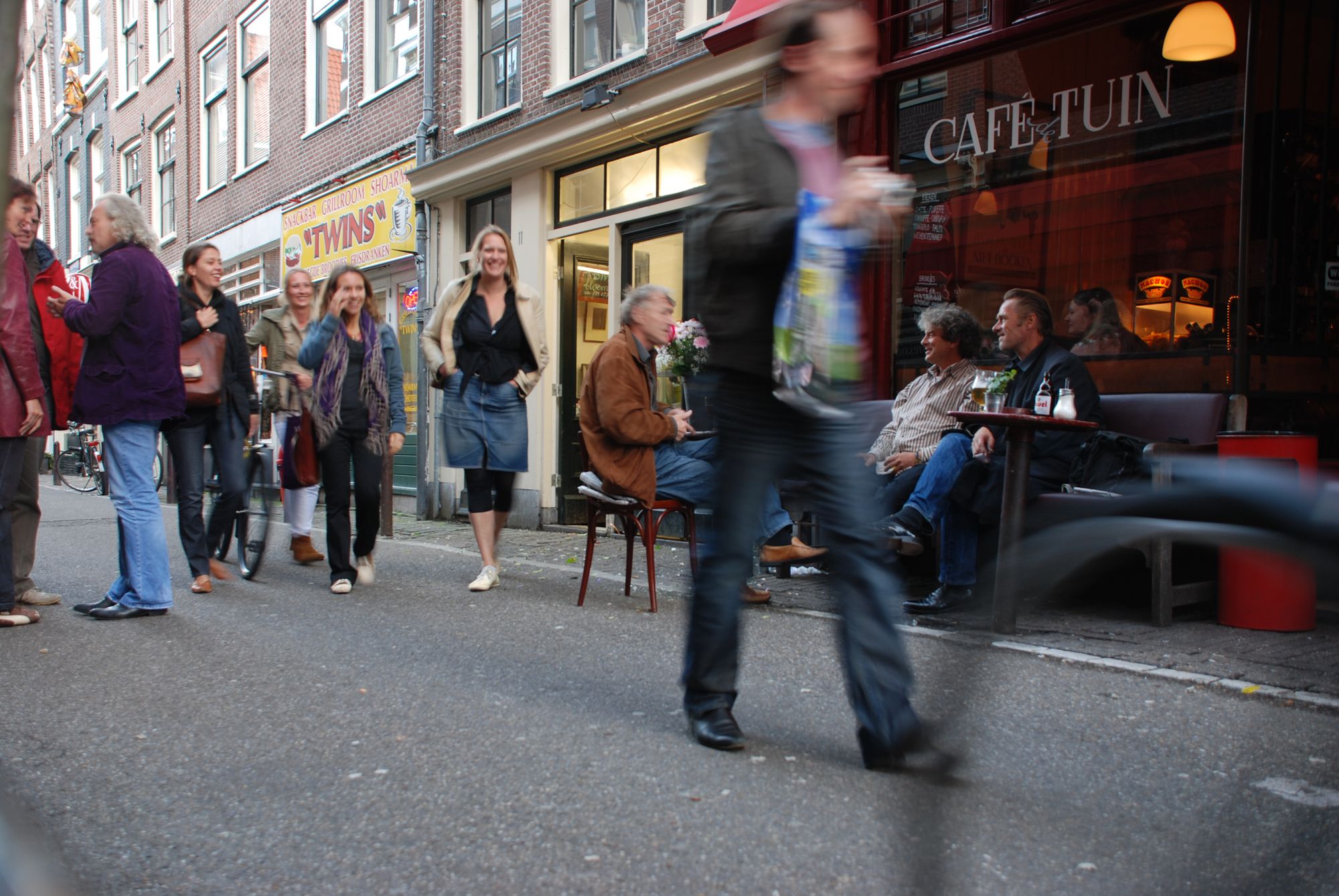
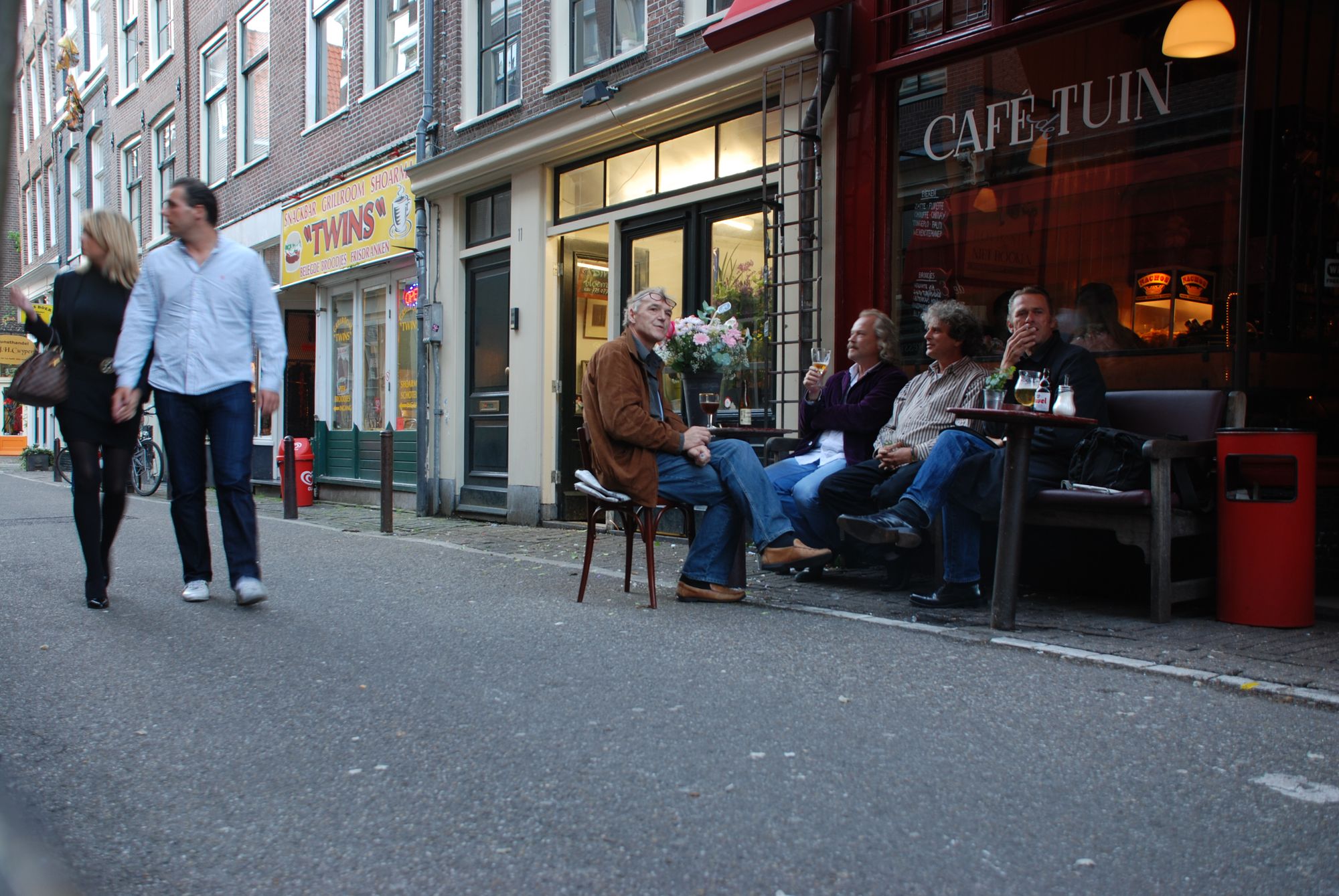
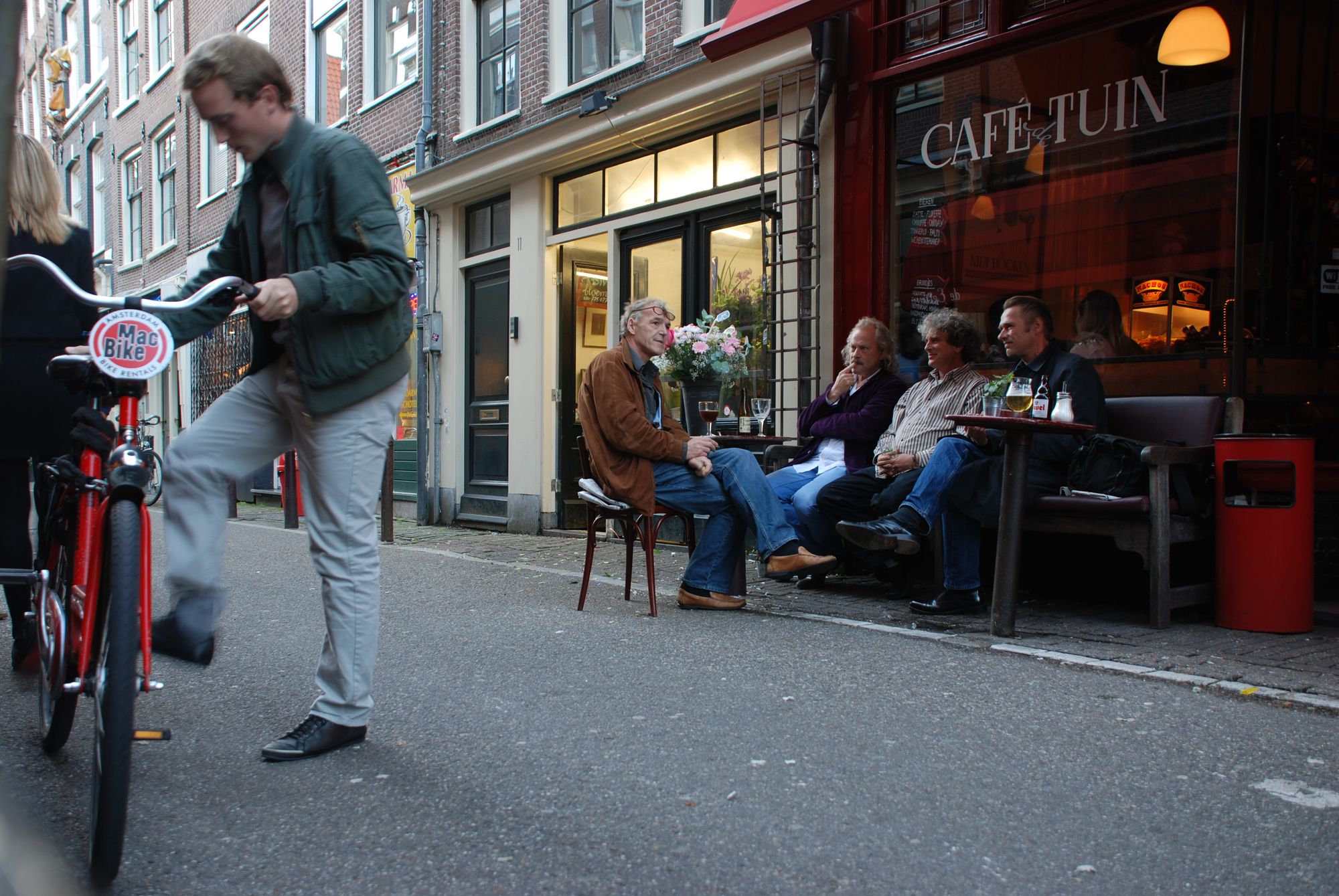
There is nothing particulary expensive of exculsive about the street or the social life.
Across contexts and cultures, when allowed, people naturally gravitate to participating in and creating street life. And it is this life that is the building block of strong communities, cultures and local economies. This particularly dynamic street hums along because of a society that nurtures (and is nurtured by) shared places. As Chuck Marohn of Strong Towns says, “We did not build places like this because we were rich, we became rich because we built places like this.”
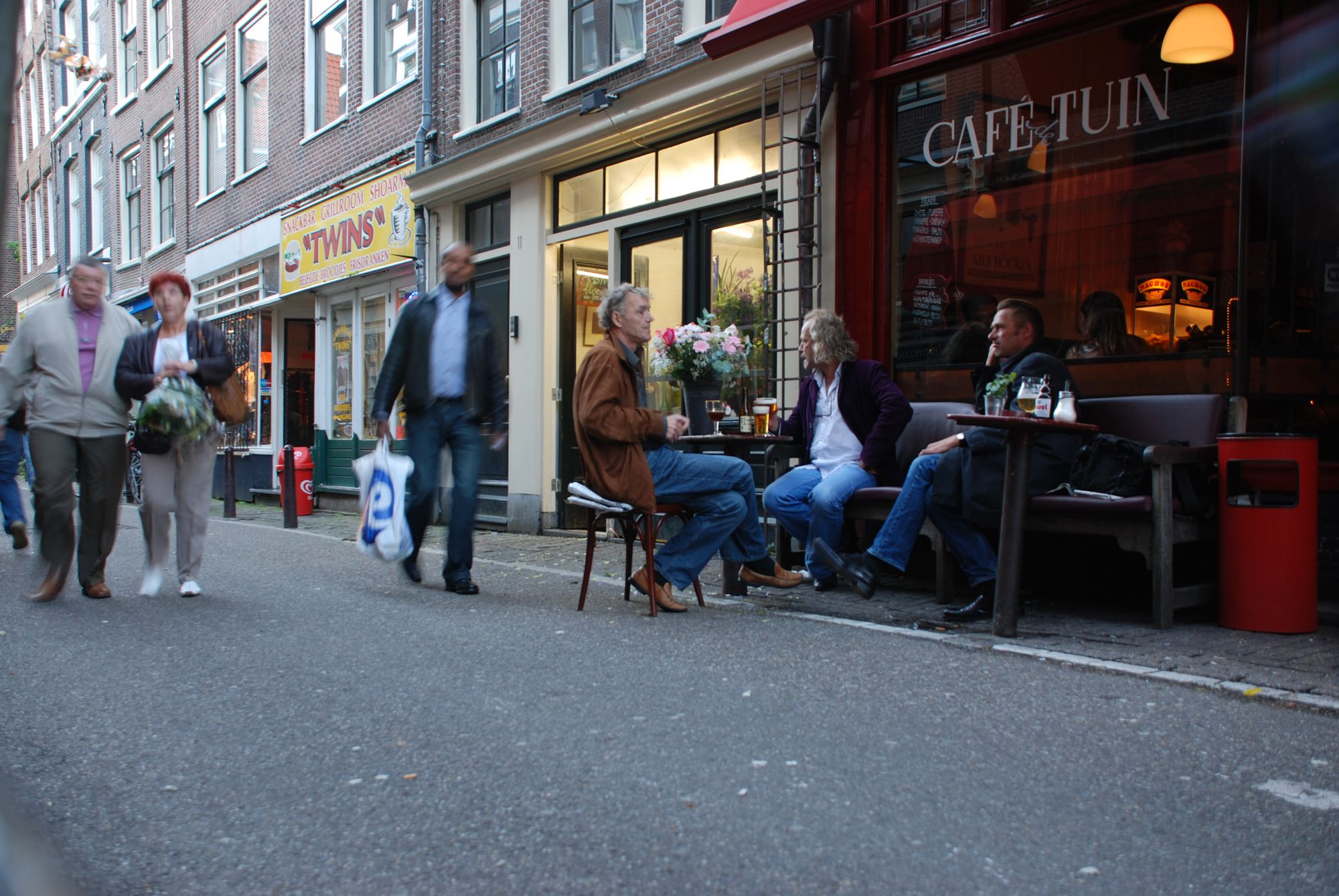
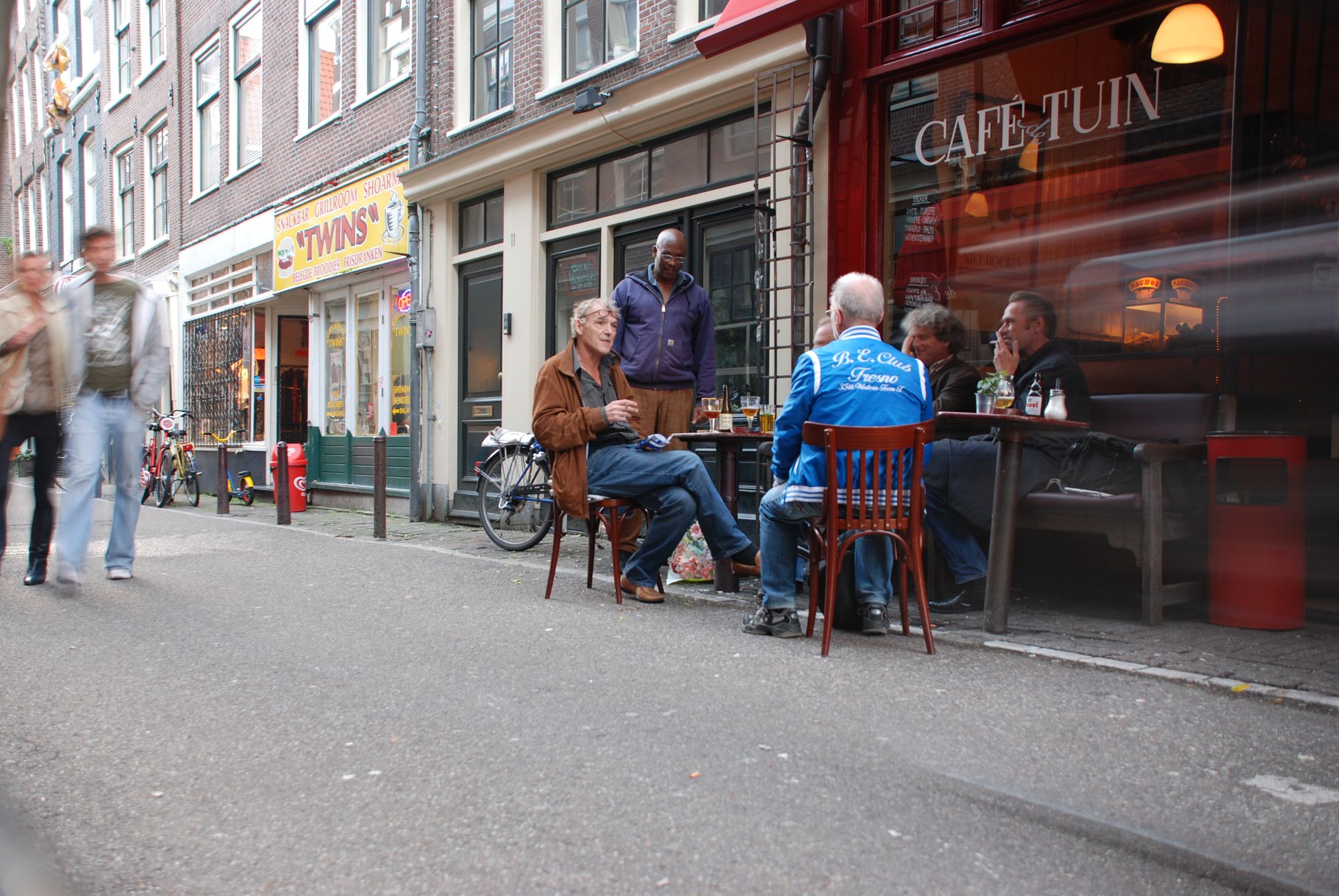
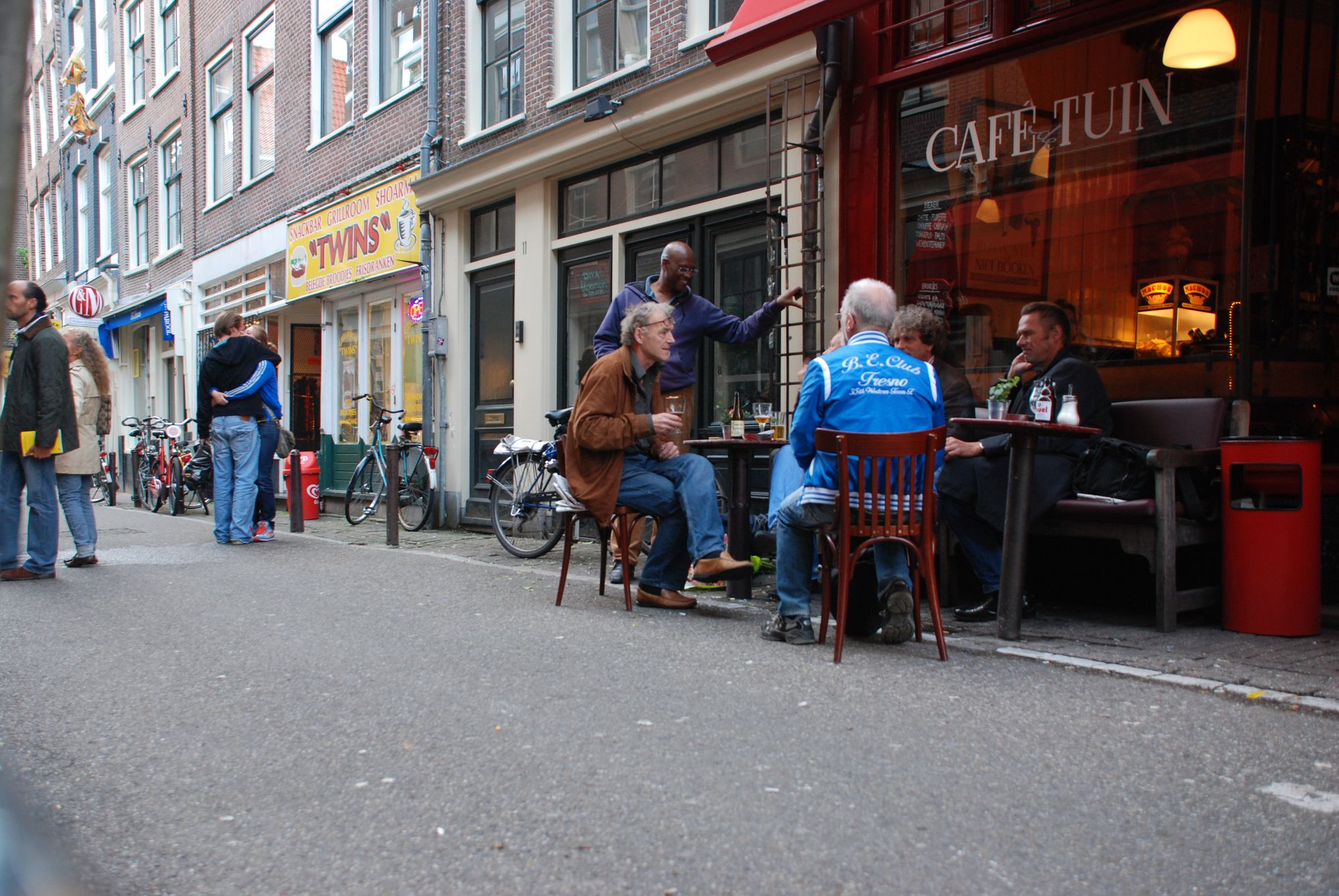
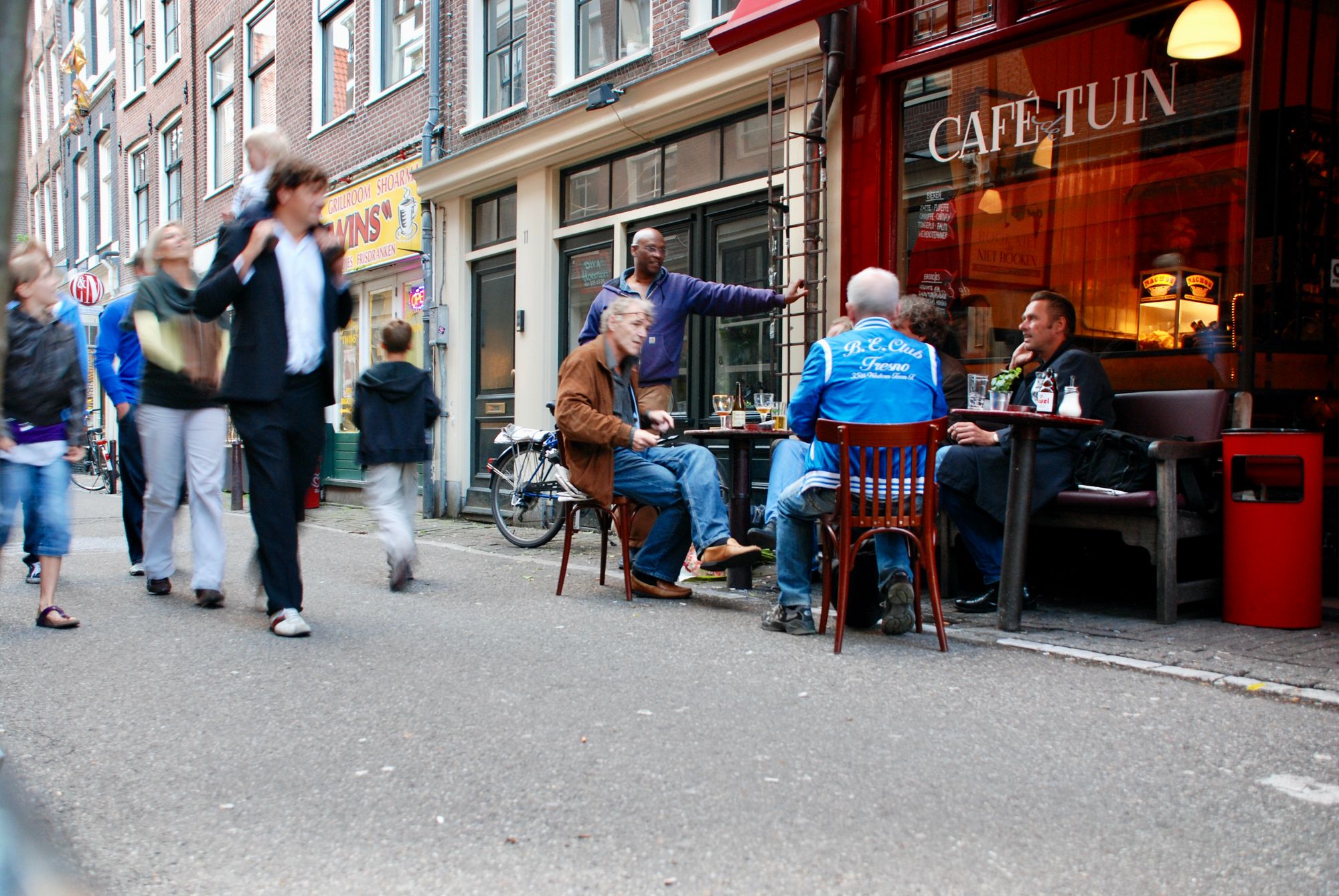
The ingredients, and social life outcomes, of the street are achievable at the center of most communities.
The street creates the social and economic lives of its participants, who in turn create the street. It may well be the flower vendor, who spends time in front of his shop adjusting the display and talking with passers by, that truly anchors the place and embodies what this street makes possible.
Retail that competes to contribute to the public experience, not just benefit from it, is usually among the greatest contributors to successful streets, and what allows public streets to compete with malls and chain stores. The life and vitality of cities is defined at this human scale of the street, yet no one but the pedestrian and those serving them really pay this scale any attention.
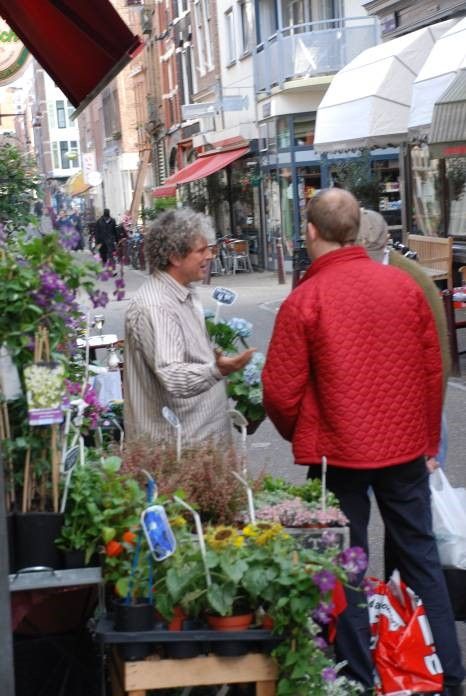
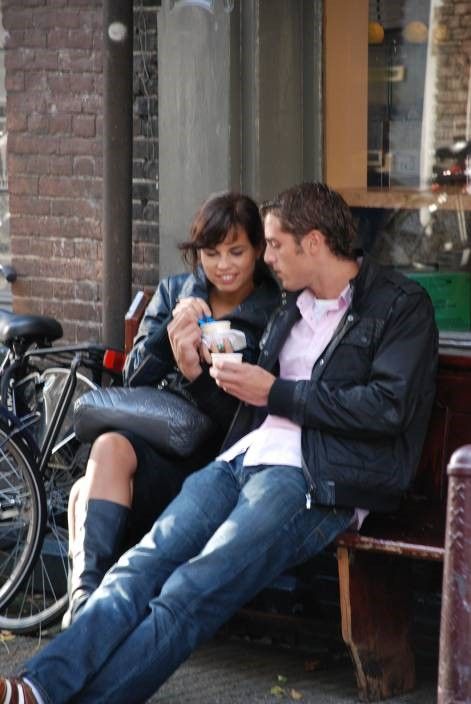
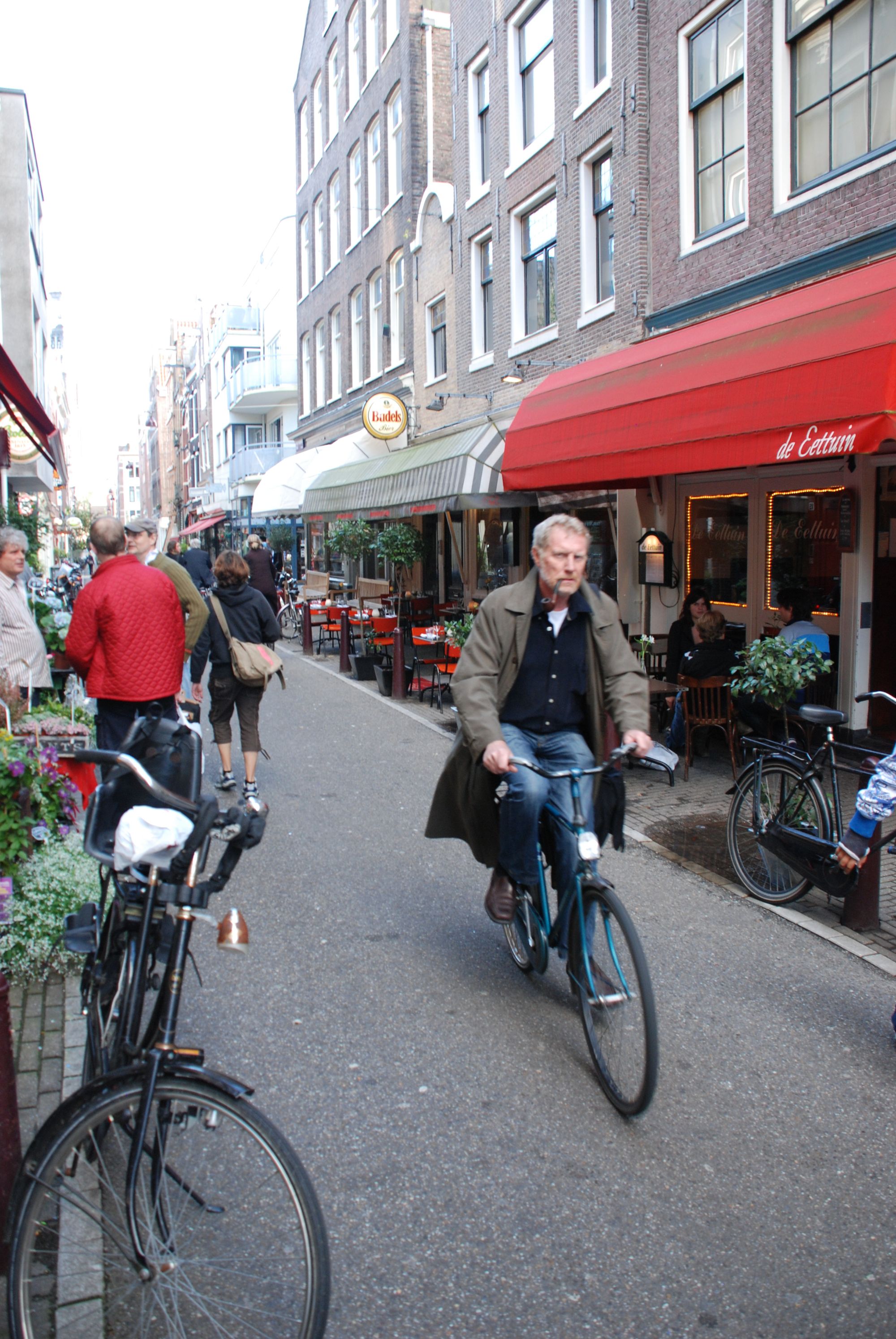
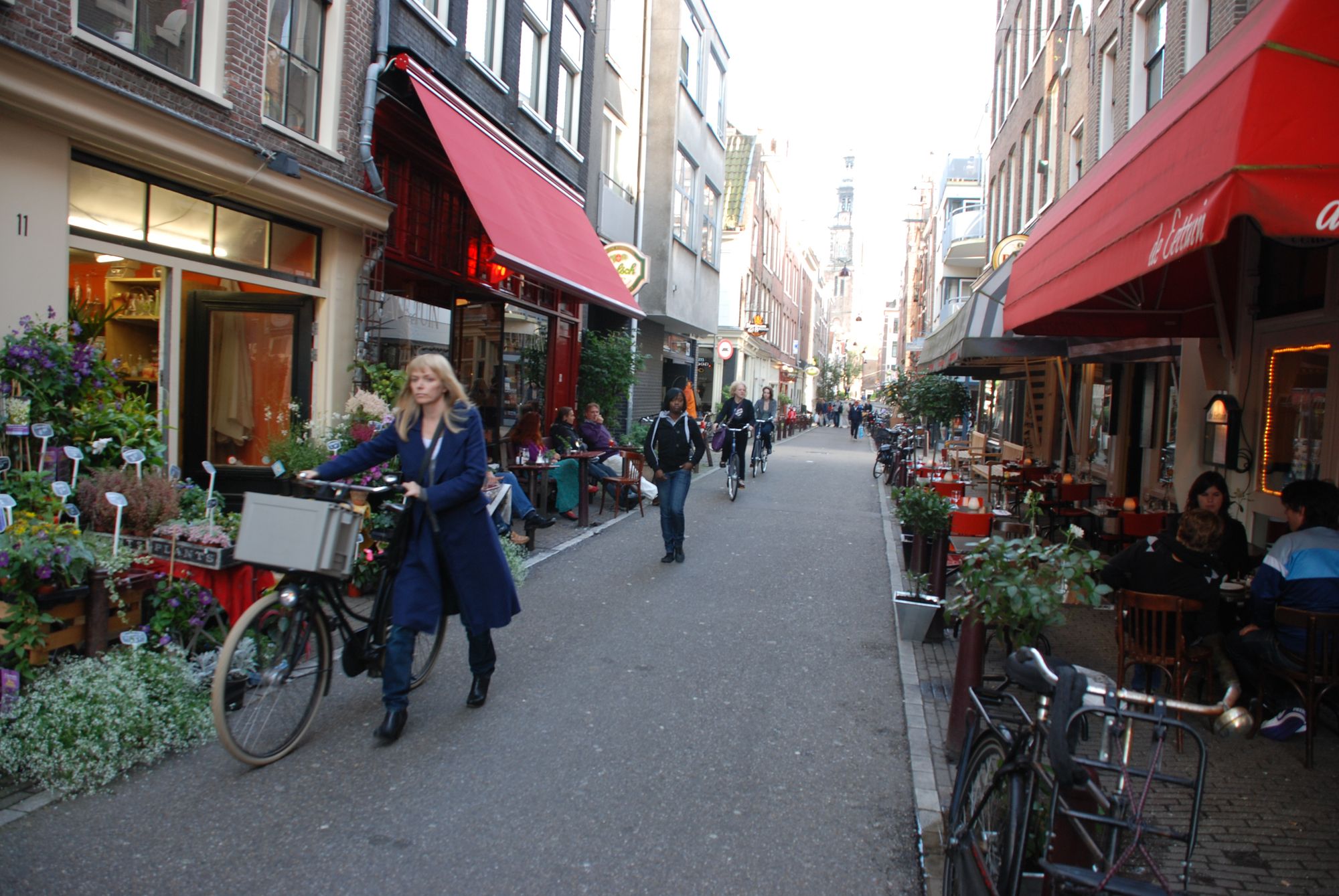
One might say that this social life is unique to Dutch culture, but this street has clearly shaped and created the cutlure of its people as much as the people are shaping the street.
No one really plans streets for the potential of what they can become as a place. Even so, Tweede Tuindwarsstraat centers on the daily patterns of social life, business activity, personal mobility and feelings of comfort in the city. While most streets and transportation systems have their foundations in planning for mobility and mitigating its negative impacts, Tuindwarsstraat leads us to ask: What if we planned streets and transportation systems with the goal of supporting social settings, of planning for places where people want to be?
An earlier version of this article was first published in Street Design: The Secret to Great Cities and Towns
Related Articles
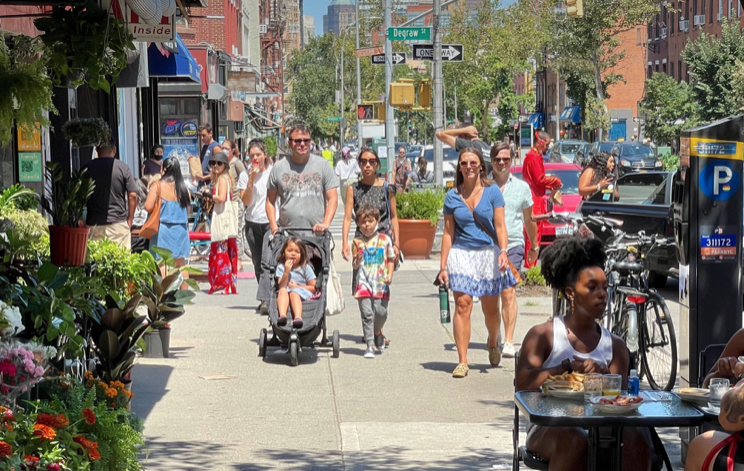
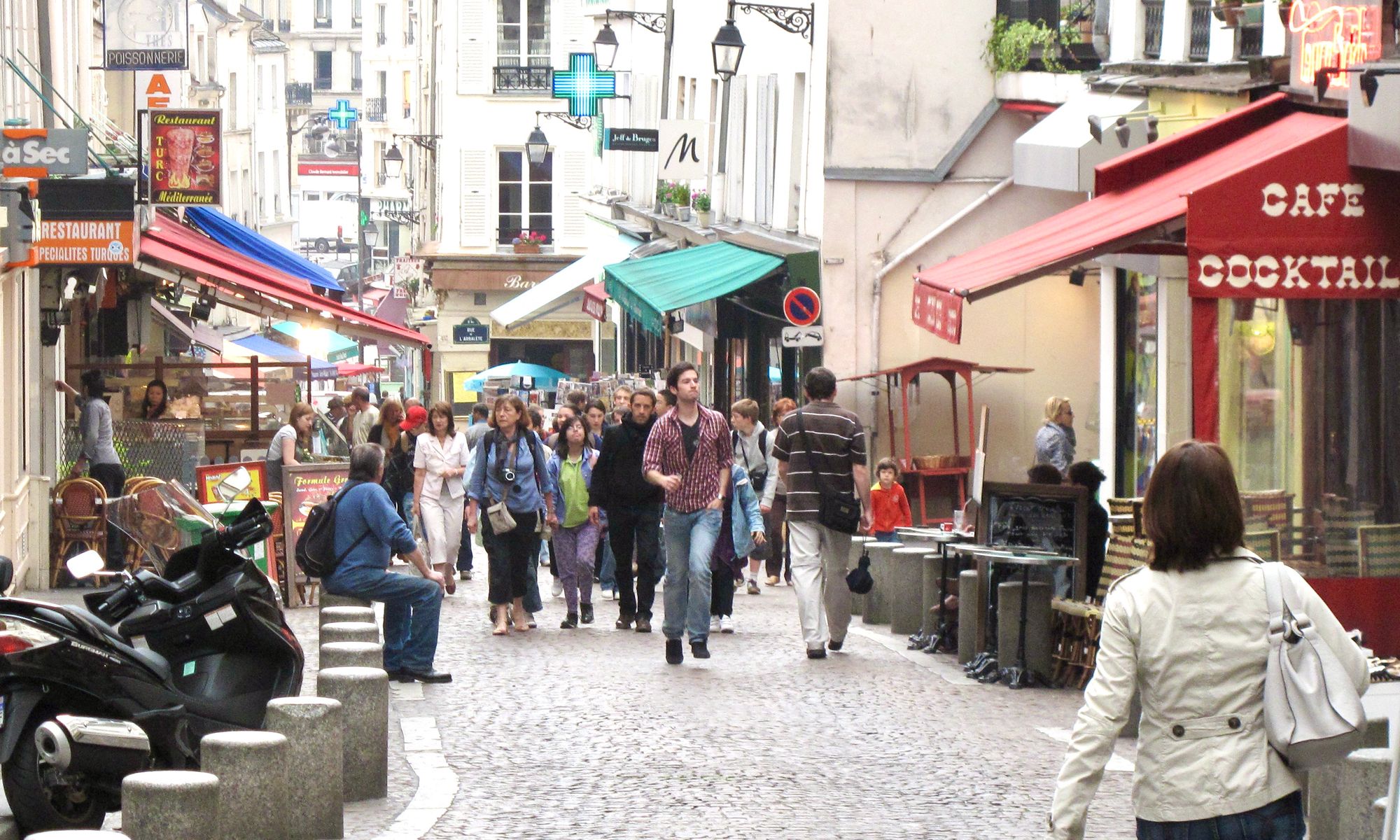
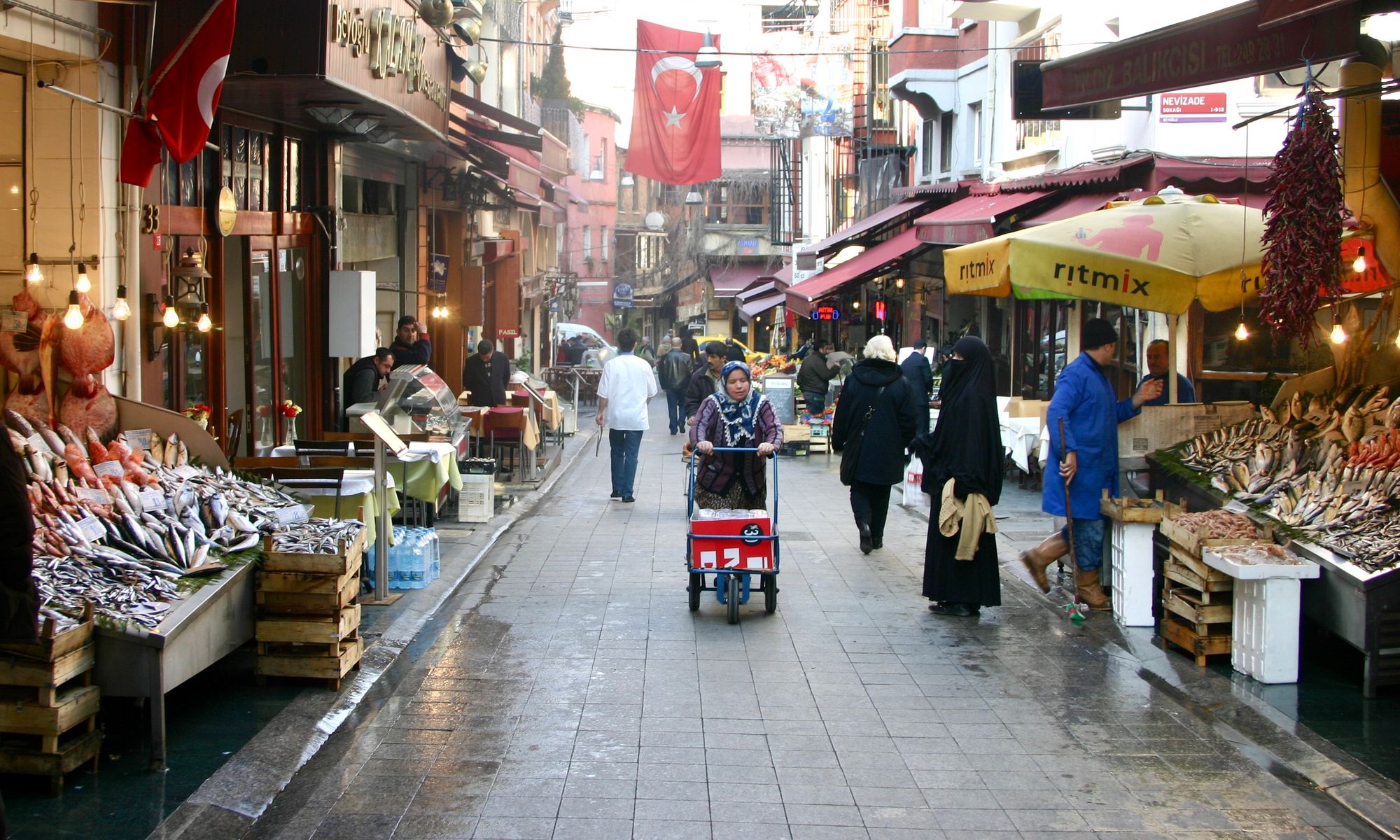
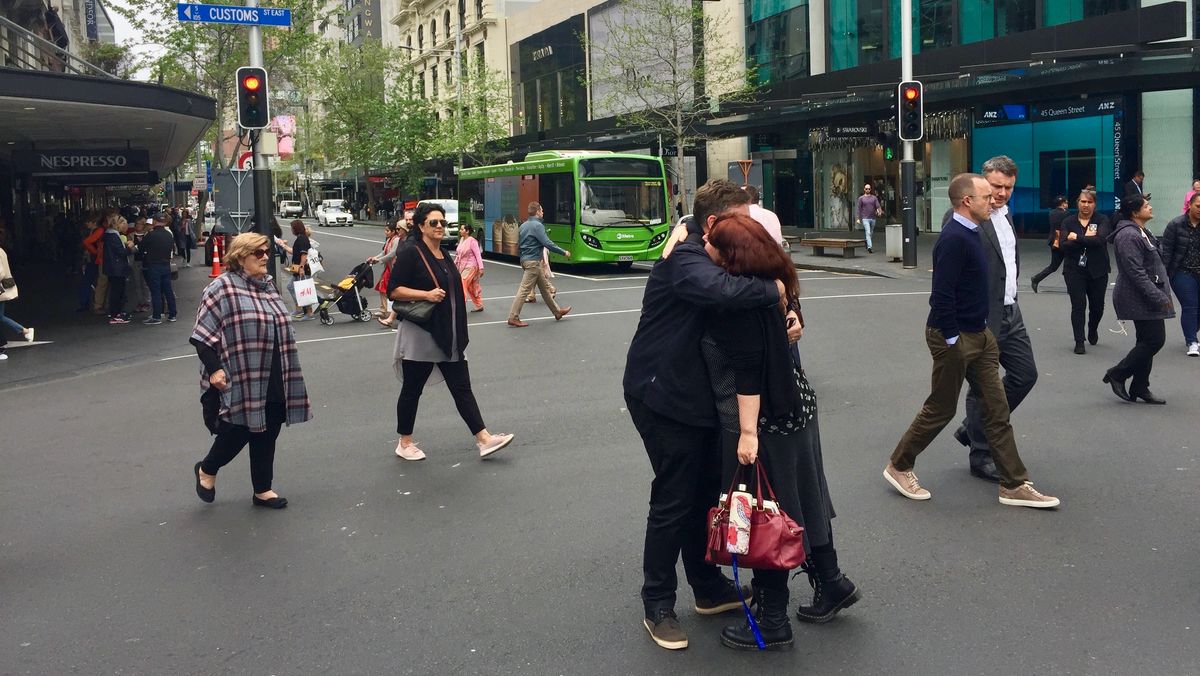
Further Reading
